
Pssst. I have a secret to tell you. A secret...de fromage! And if you love cheese as much as I do, I hope you can join me for this special episode of "Wines of the Week" on Facebook LIVE featuring fabulous Cheeses of Europe. Entitled, 'Secrets de Fromage,' this show features an exceptional selection of tantalizing cheeses, as well as a wonderful lineup of wines from around the world to pair with them.
And let's face it, from George and Amal to Beyoncé and Jay-Z, some pairings are truly special. They have a sizzling synergy and are simply greater than the sum of their parts. In this episode, I'm also going to share some tips and tricks to help you create exceptional, 1+1=3 wine and cheese pairings at home. Just be ready for your friends and family to start stopping by on a much more regular basis.
So are you ready to dive in?
Please scroll down for the list of featured wines and cheeses mentioned in this episode, but you simply must watch the video below for ALL the juicy details! Also, as promised, links to all the resources mentioned in the show can be found directly below the list of wines and cheeses.
PAIRING PRINCIPLE #1: Pair Cheeses and Wines of Similar Weight & #2: Pair White Wines with Cheese.
GG SERVING TIP: I also love to serve Brie with Braswell's Red Pepper Jelly ($6.95). This delightfully spicy jelly is positively DELICIOUS and the fat in the cheese keeps its heat in check.
PAIRING PRINCIPLE #3: Pair Sparkling Wine with Rich, Salty Cheeses & #4: Pair Wines and Cheeses with Similar Flavors.
GG SERVING TIP: Due to Comté's delightful flavor profile, I love to serve it with Marcona almonds and dried apricots.
PAIRING PRINCIPLE #5: If it Grows Together, it Goes Together!
GG SERVING TIP: Serve this delectable Italian cheese with a drizzle of balsamic glaze and meaty Castelvetrano olives for maximum deliciousness.
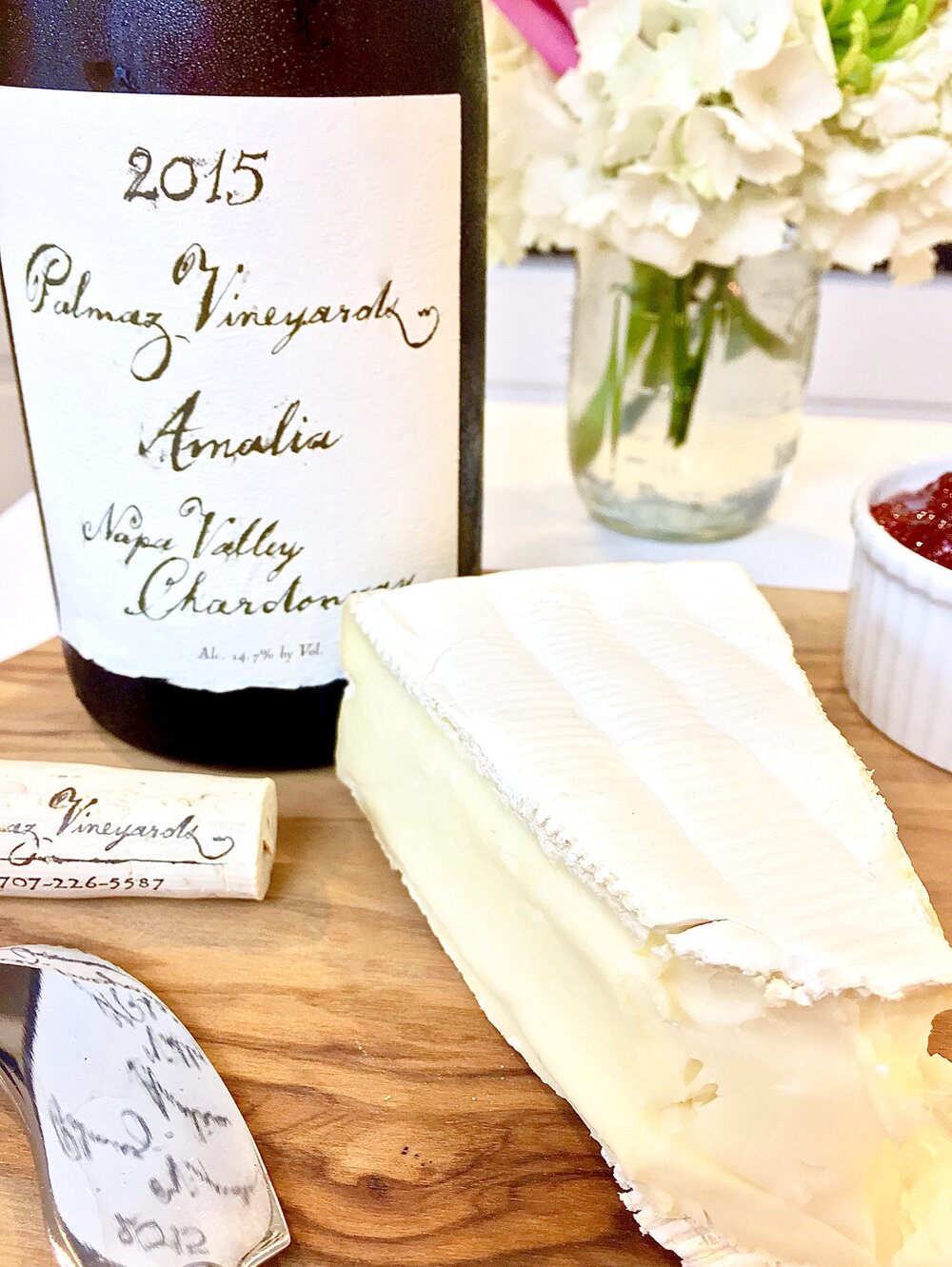
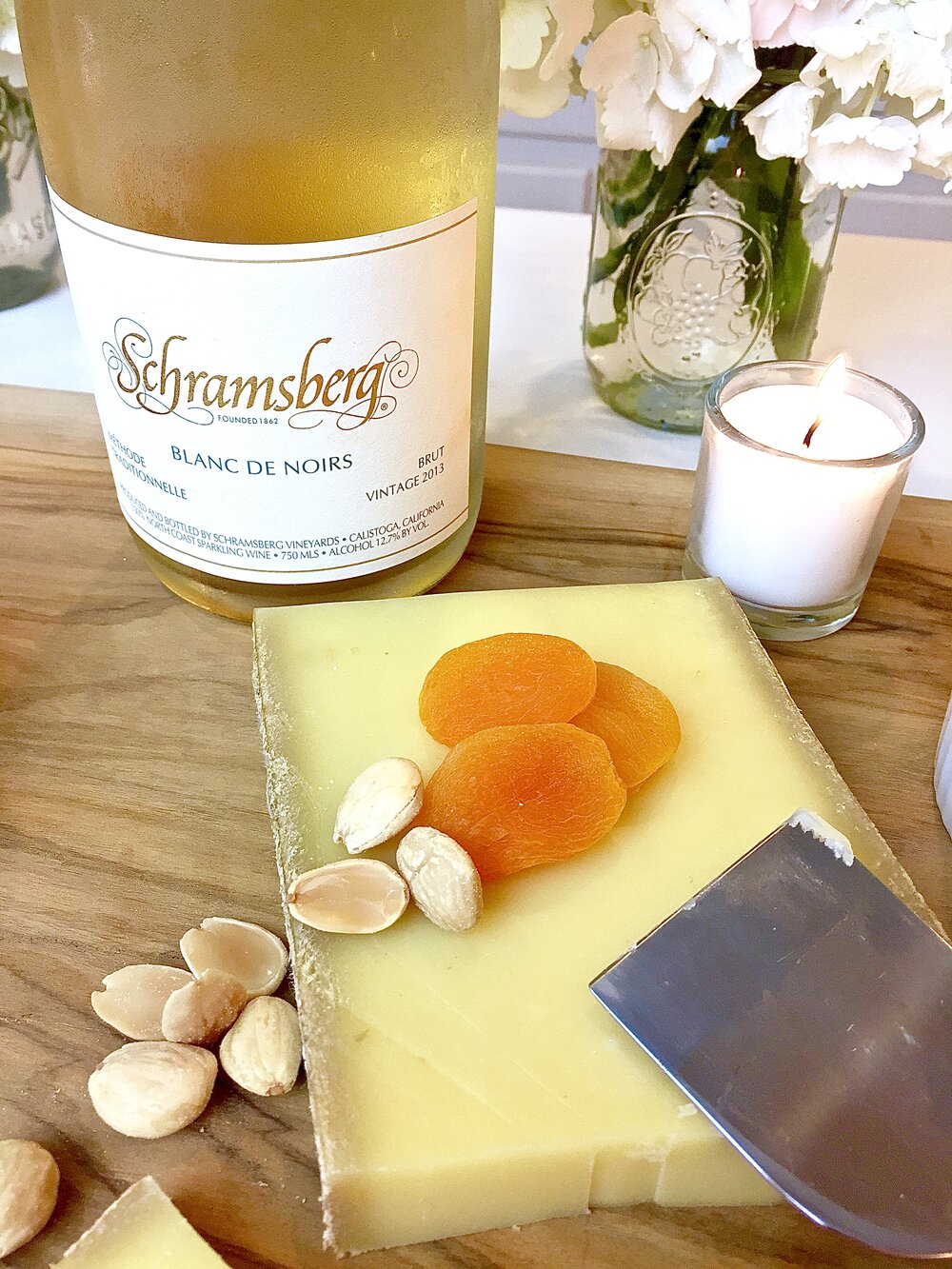
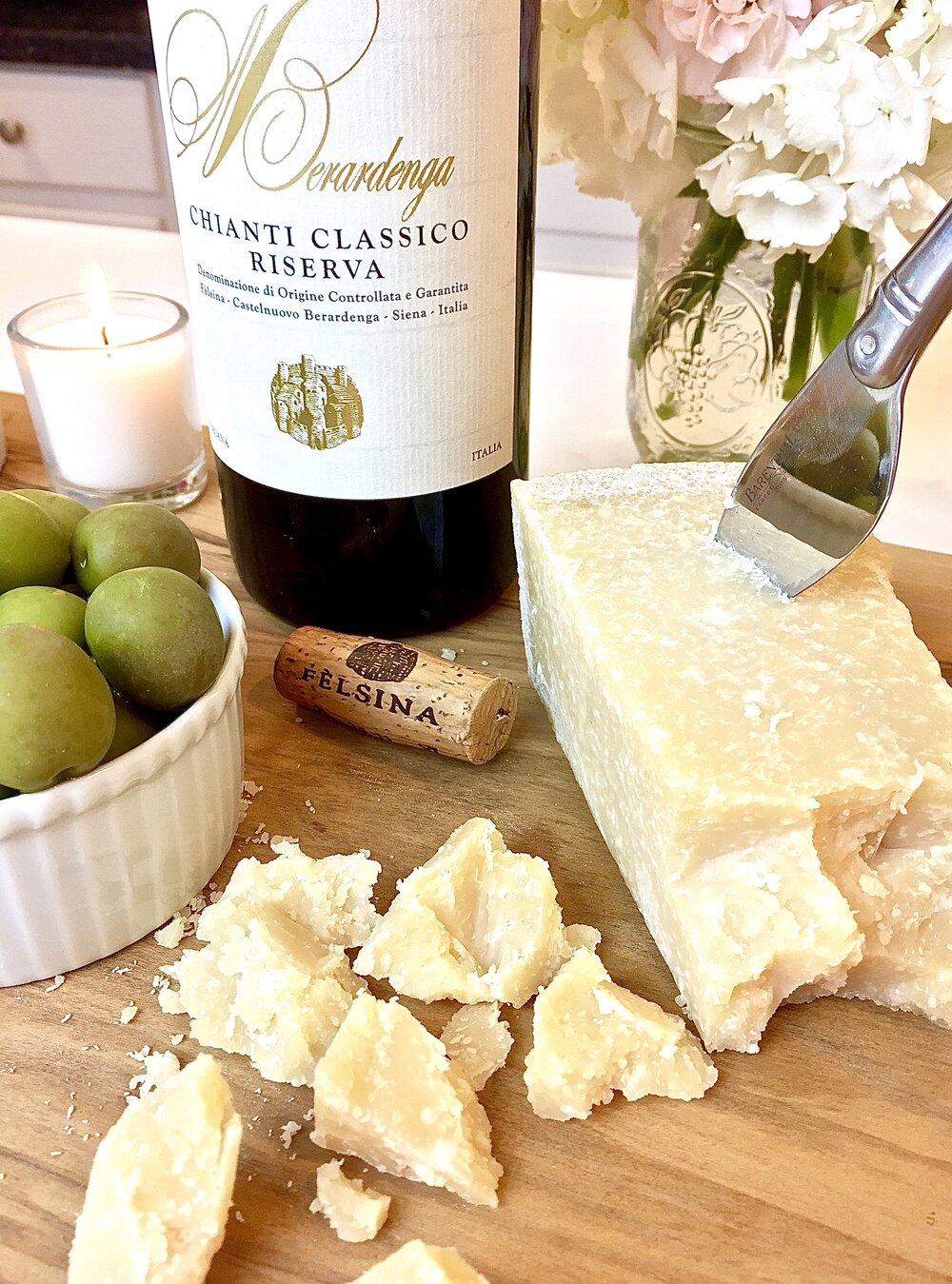
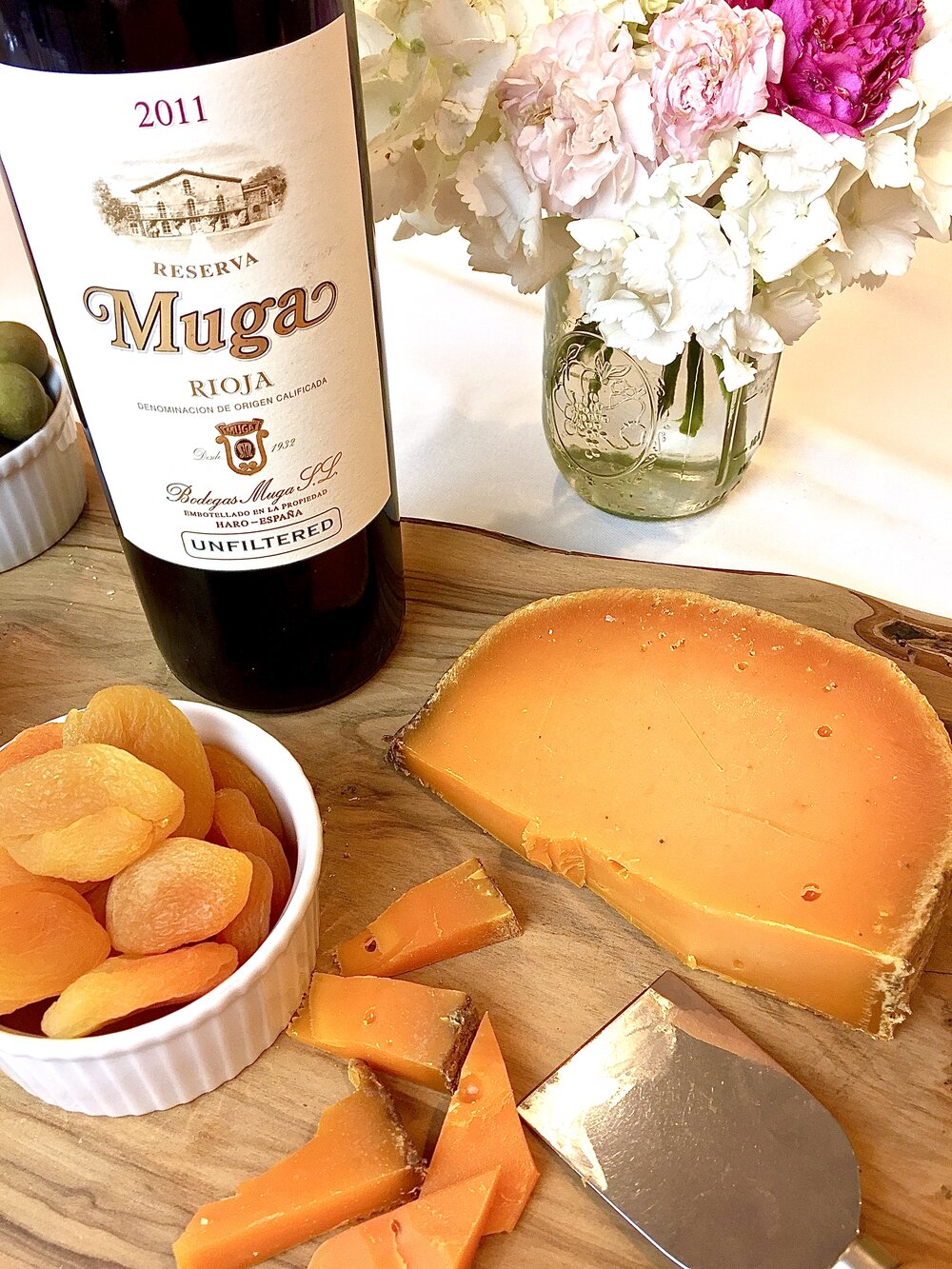
PAIRING PRINCIPLE #6: Pair Red Wines with Hard Cheeses!
GG SERVING TIP: This gorgeous, bright orange hard cheese is complemented by a variety of dried fruit such as apricots, cranberries and figs.
PAIRING PRINCIPLE #7: Pair Cheese and Wine with Opposite Flavors!
GG SERVING TIP: Serve creamy, salty blue cheeses with a generous drizzle of honey for an over the top sweet and salty experience - YUM!
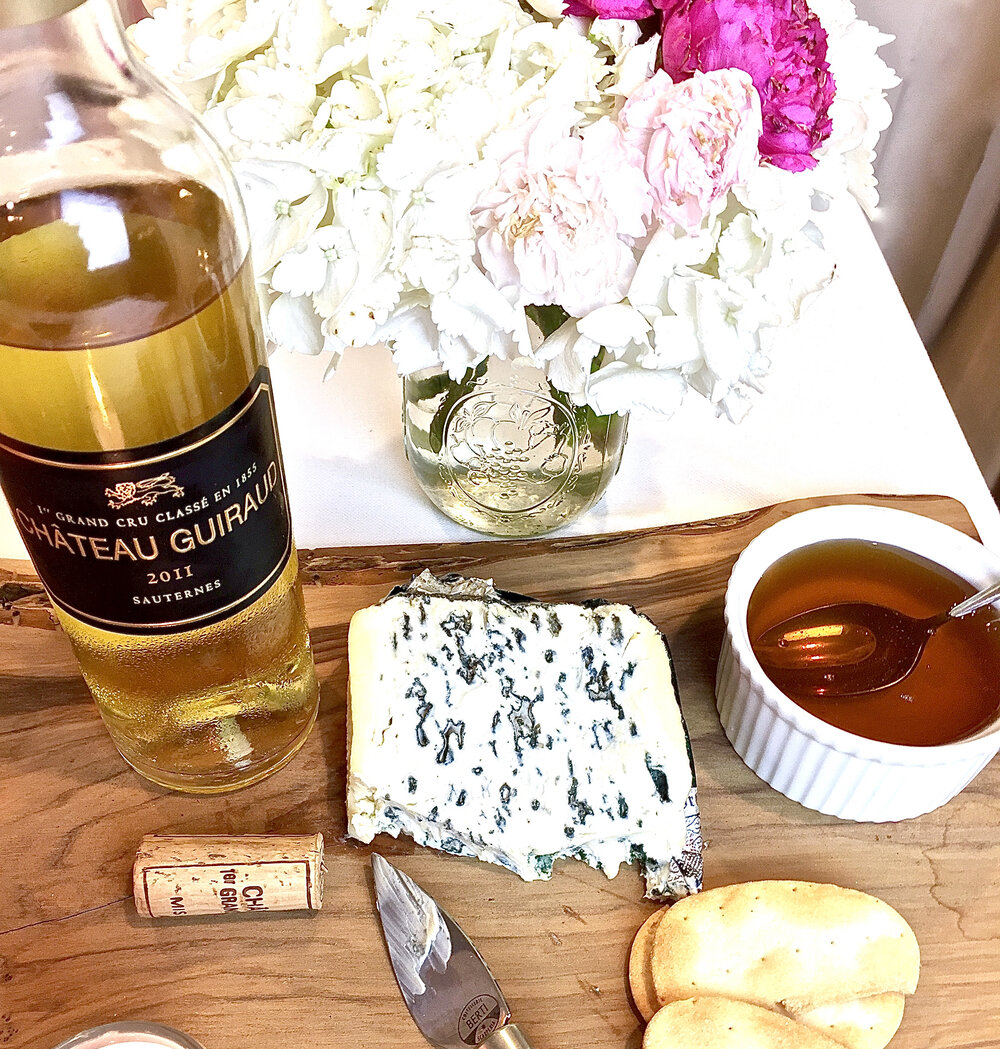
- Learn more about the wine making term, "Sur Lie"
- Click here to go to my Facebook LIVE "Wines of the Week" playlist where you can search for my Italian Wine Month episodes (why can we STILL not share a playlist URL from Facebook, Mark Zuckerbeg?!?)
- Learn more about the wine term "Terroir" I hope you enjoyed this episode of “Wines of the Week” featuring 'Secrets de Fromage' from Cheeses of Europe.
I sure enjoyed sharing these delightful cheeses and wines with you, and I hope you find these pairing principles helpful next time you're entertaining at home. And I'd really love to know what YOUR favorite wine and cheese combinations are so please let me know in the Comments section below.
To view previous episodes of “Wines of the Week,” please click here and enjoy!

The marriage of Meghan Markle, former Hollywood actress and divorcée, and His Royal Highness Prince Henry of Wales (aka Prince Harry) has caused quite a stir both in England and abroad. And while Meghan may not be what the Royal family had in mind, there's something about the way they've embraced this unexpected, yet utterly charming American that has inspired an intense enthusiasm for this union around the globe.
The gorgeous midday wedding took place in the centuries old St. George's Chapel at Windsor Castle (yes, the Miskews got up at 4:30am to watch EVERY moment!). And while the ceremony followed a mostly traditional protocol, there were distinct nuances throughout that were unmistakably Meghan. From Bishop Michael Curry's lengthy message of love to the sheer number of Hollywood icons in attendance (hello - Oprah AND the Clooneys?!?) it was clear a new era had begun. But from a culinary perspective, the most notable difference was the wedding cake.
Since the Middle Ages, fruitcake has been the traditional cake choice at royal weddings. Period. End of Story.
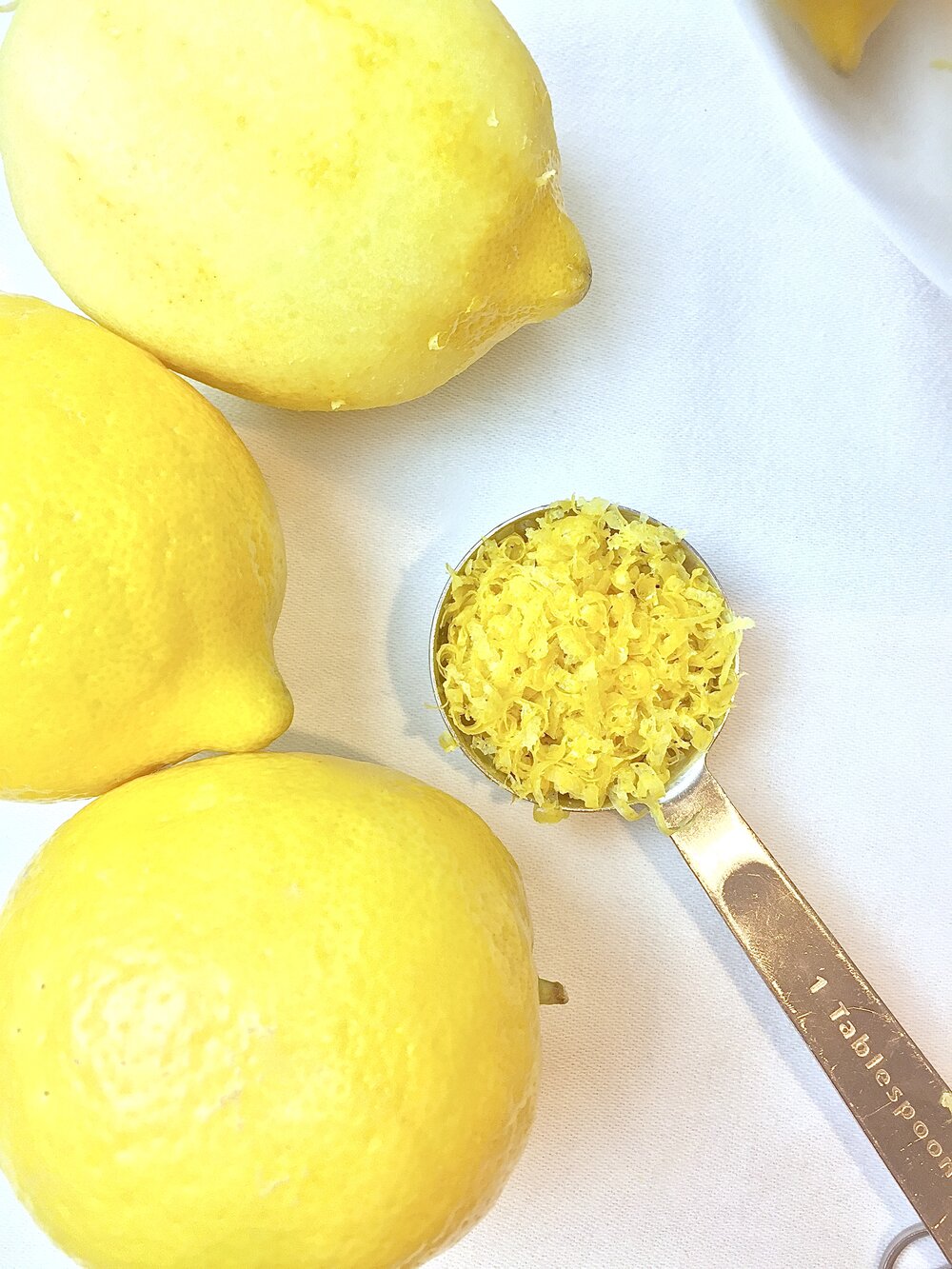
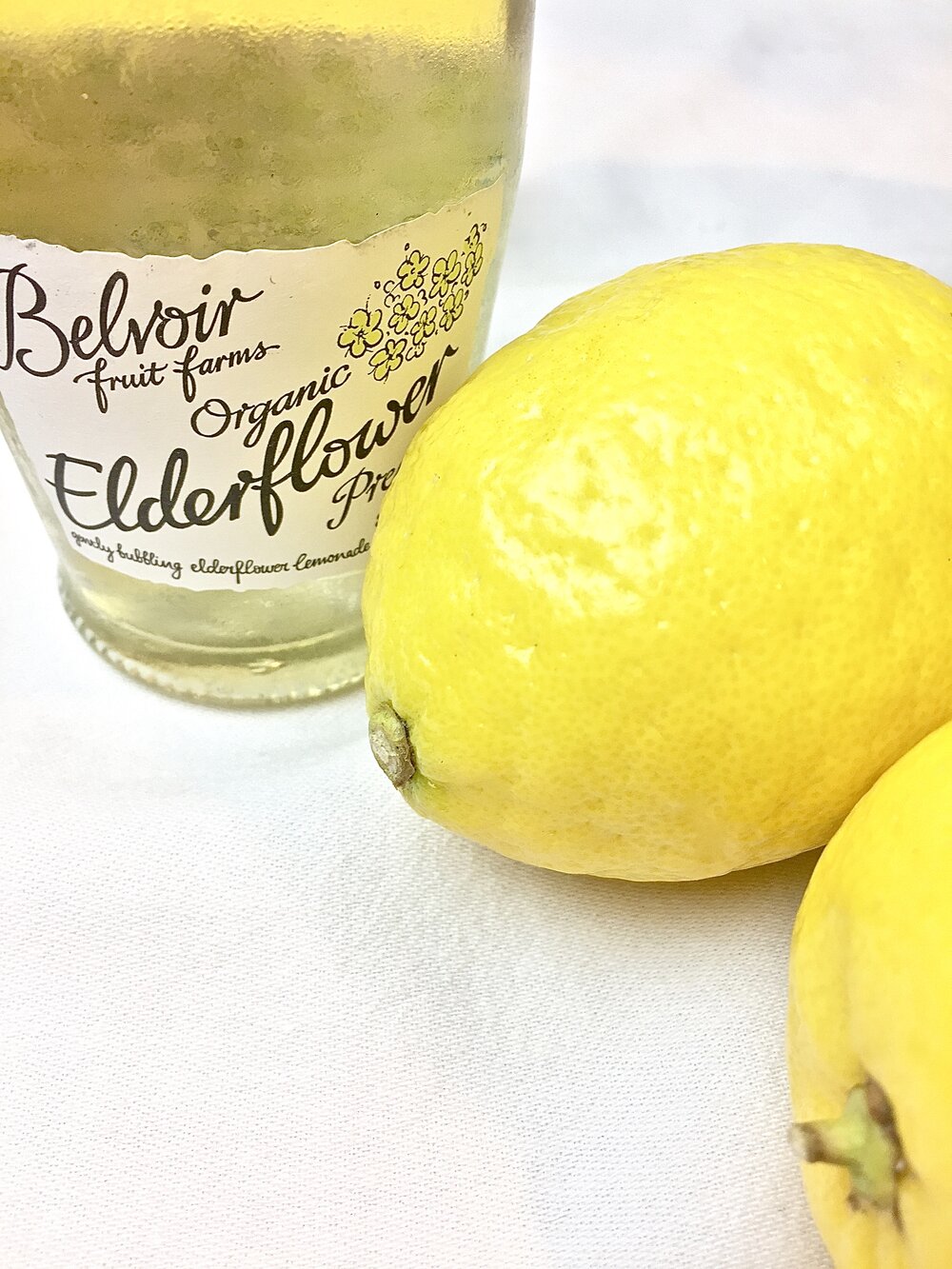
This was largely due to the cake's staying power, the result of a hearty mixture of dried fruit, exotic spices and the addition of rum or brandy which acted as a natural preservative. So from the 1923 wedding of Prince Albert and Lady Elizabeth Bowes-Lyon to the 2011 marriage of Prince William to Kate Middleton, fruitcake has been an enduring royal presence and tradition...until now!
For their wedding, Meghan and Prince Harry eschewed the traditional fruitcake (YESSS!) in favor of an elegant Lemon Elderflower Cake. American-born, pastry Chef and friend of the bride Claire Ptak of London's Violet Bakery was tapped to create the Spring-inspired marital confection. And in true royal fashion, Ptak spared no expense, flying in Amalfi lemons and organic eggs from Suffolk especially for the occasion. She also incorporated elderflower cordial from the Queen’s Sandringham estate in Norfolk because, well, why the heck wouldn't you?
But what the heck IS elderflower anyway and why is it so special?
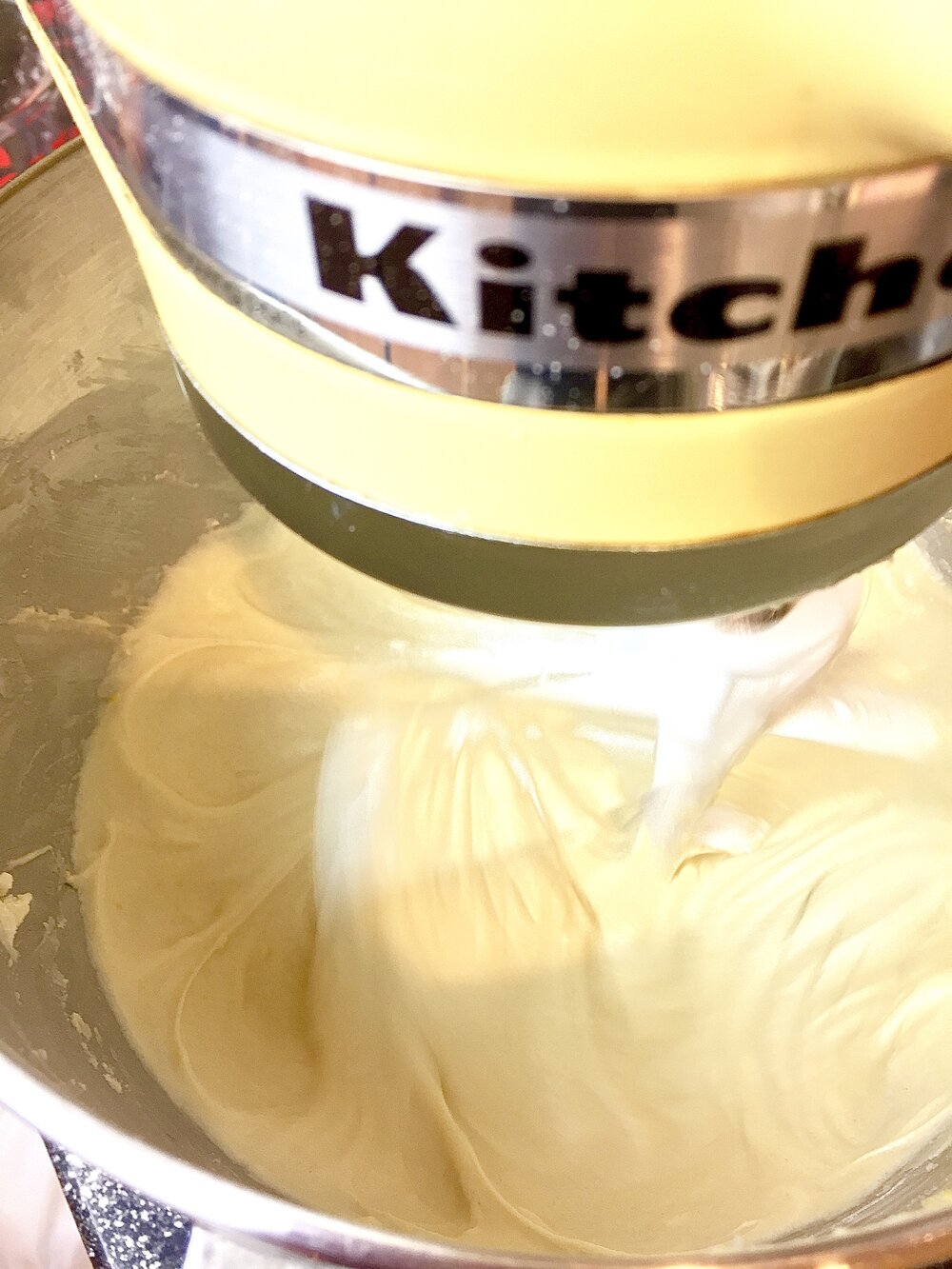
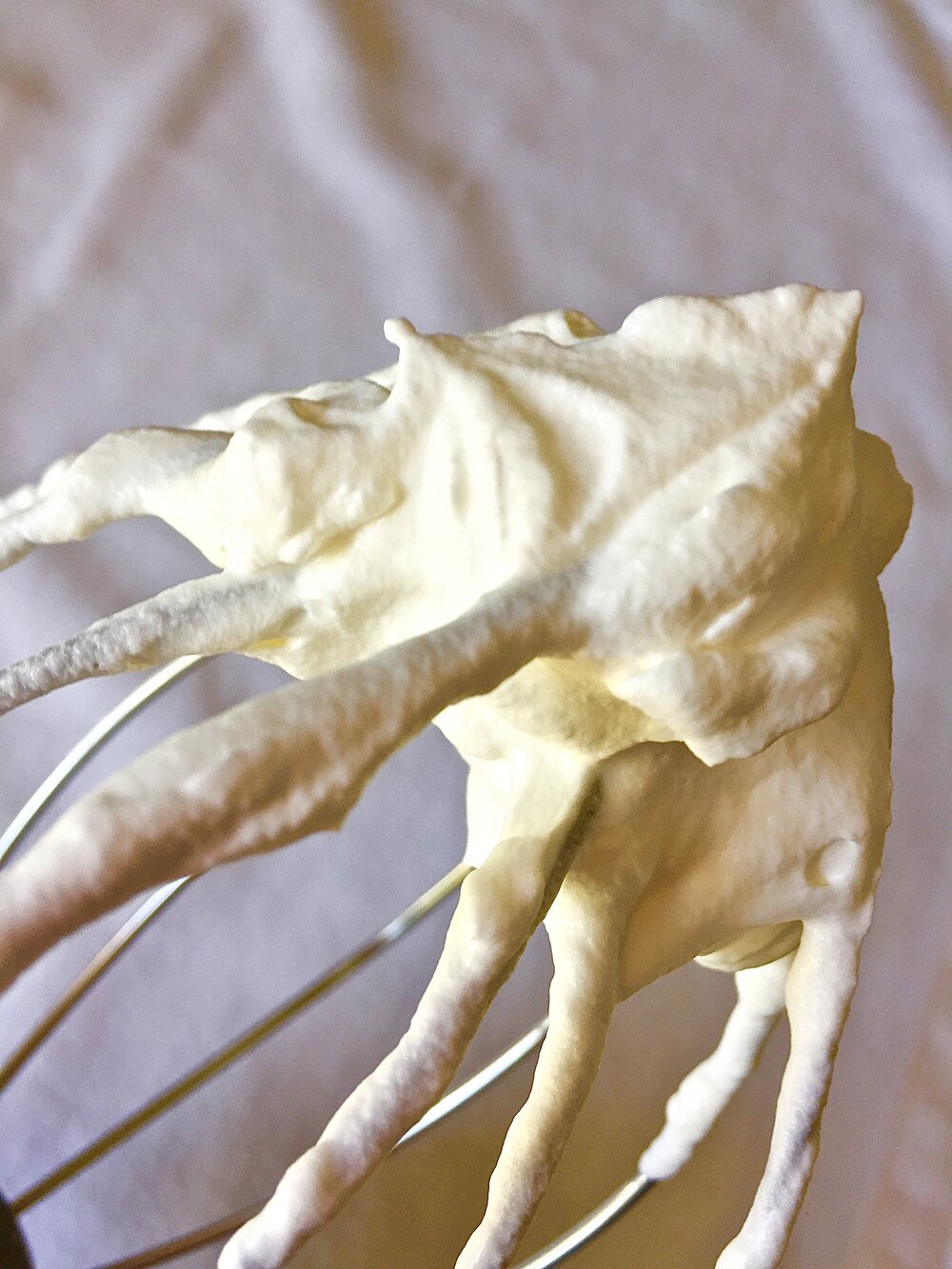
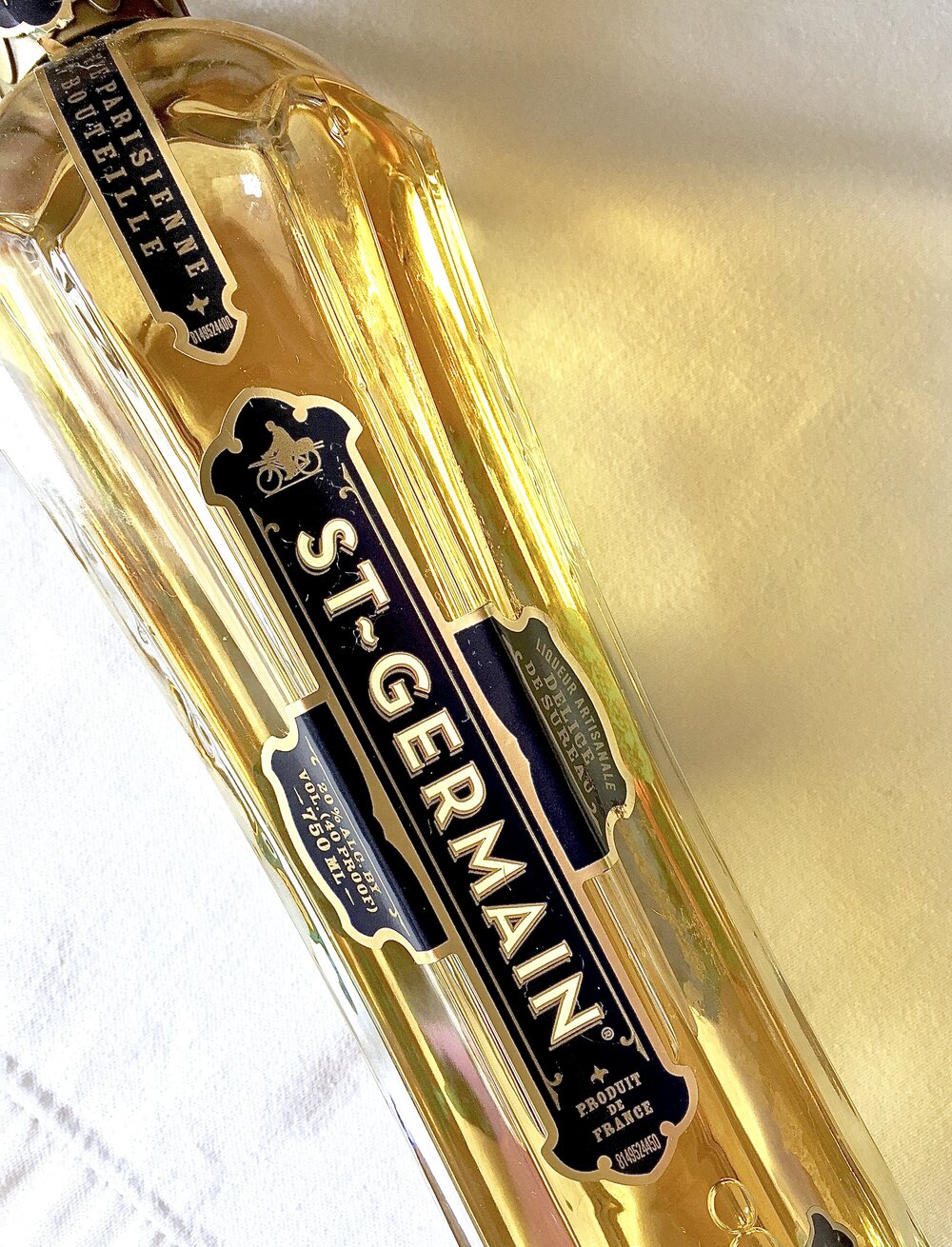

Elderflower is a small, intoxicatingly fragrant white flower that blossoms throughout the U.K. and Northern Europe in the Spring and early Summer, making this royal cake very seasonally and regionally appropriate. In this recipe you'll use a combination of (1) Elderflower Cordial and (2) St. Germain. Elderflower cordial is a non-alcoholic soft drink made from a refined sugar and water solution and the flowers of the European Elderberry plant. I used Belvoir Elderflower Pressé in this recipe (see photo above), a premixed form of Elderberry cordial that is pretty widely available.
St. Germain, on the other hand, is an artisanally produced, French elderflower liqueur. It is made from hand harvested elderflowers grown in the French Alps that only bloom during a brief 4-5 week period. The delicate flowers are then macerated and their delicious essence is extracted and distilled into the fragrant pale golden liquid. St. Germain is pretty widely available now, especially since it is so delicious when mixed with Champagne! There's something about the way it enhances citrus flavors which is why the combination of lemon and elderflower is so AMAZING!
I was thrilled to discover a foodie application for St. Germain especially since I'm working on a special series of desserts which incorporate my favorite wines, spirits and liqueurs (stay tuned!) and I can't think of a better place to start than with this scrumptious cake!
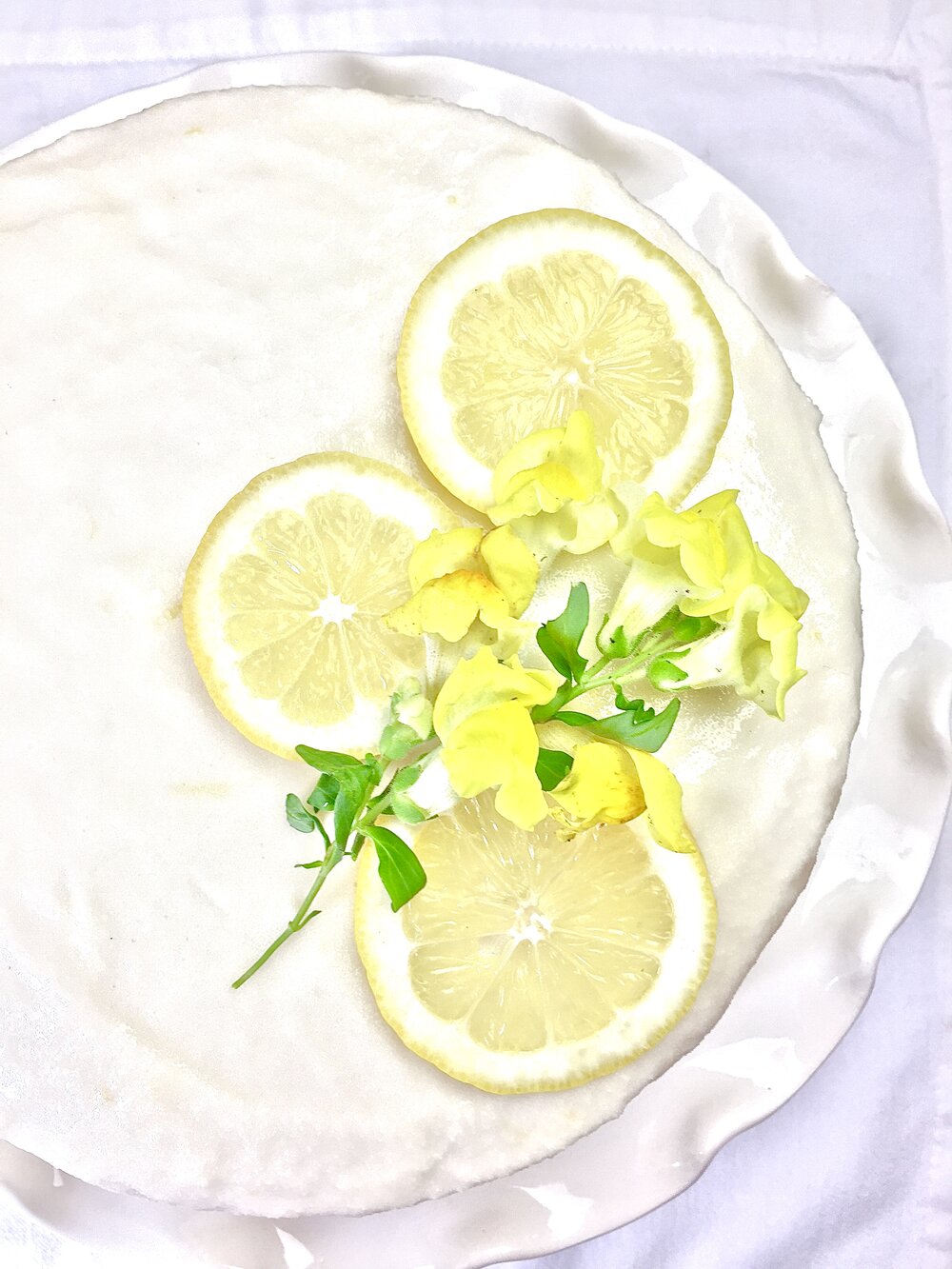
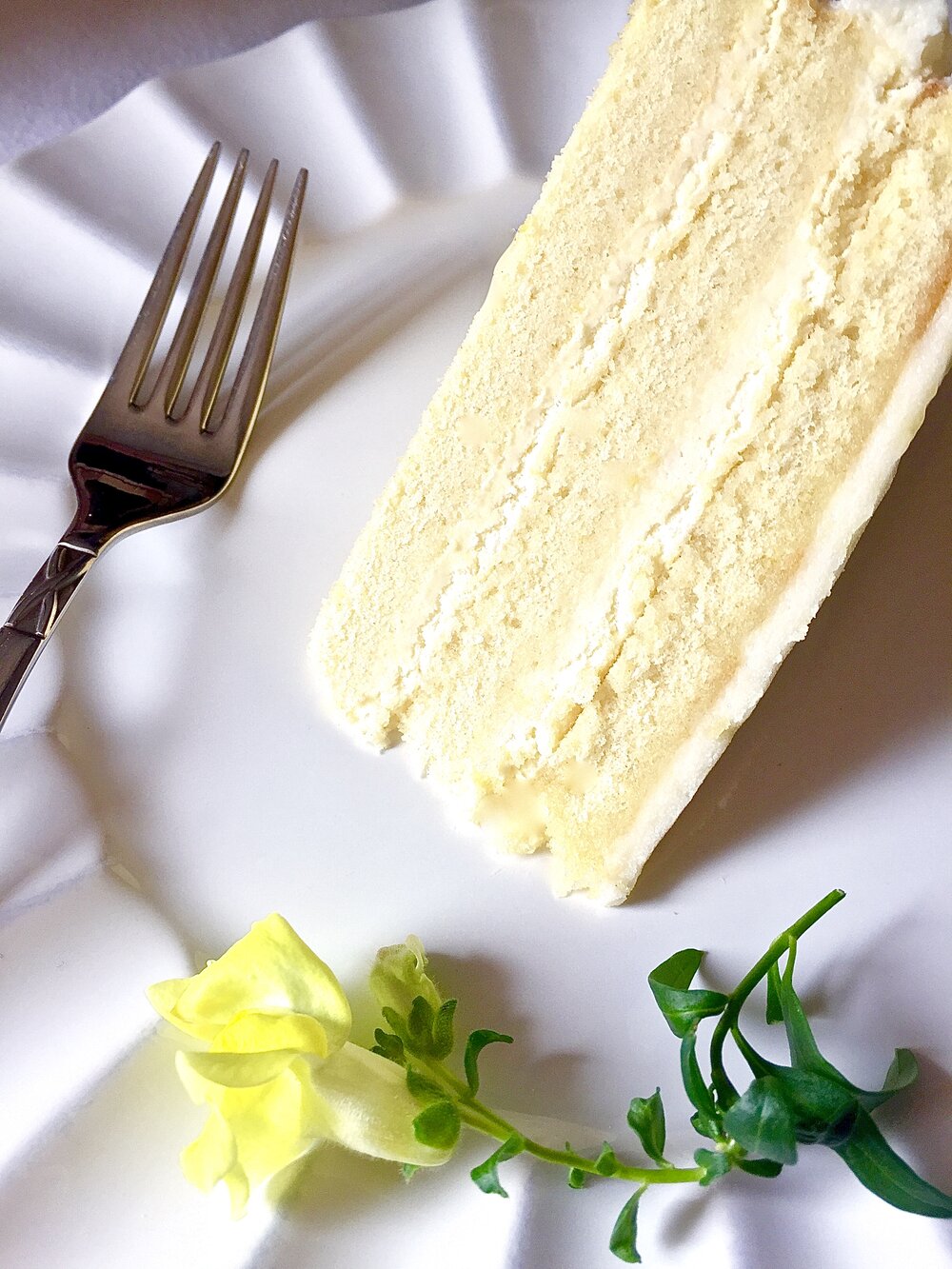
This recipe offers a very doable, make at home version of this oh so glamorous cake - and you don't even need Amalfi lemons and the Queen's elderflower cordial to make it!
To make things easier, bake the cake layers and prepare the frosting the day before assembling. A few pieces of baking equipment that'll make the process easier include: three cake pans, a kitchen or small postal scale, a standing mixer and/or handheld electric mixer, parchment paper, an offset spatula and a 12-14" cake stand. If you like to bake, you will use these essential items for years to come - I promise! Also, to decorate the cake, I stuck with a yellow theme, using some simple lemon slices and yellow snapdragons from my garden. Just remember to avoid eating any flowers not grown for culinary purposes!
I hope you enjoy conjuring royal elegance in your very own kitchen with this Lemon Elderflower Cake and a glamorous Congratulations to the newly appointed Duke and Duchess of Sussex!!!
Print Recipe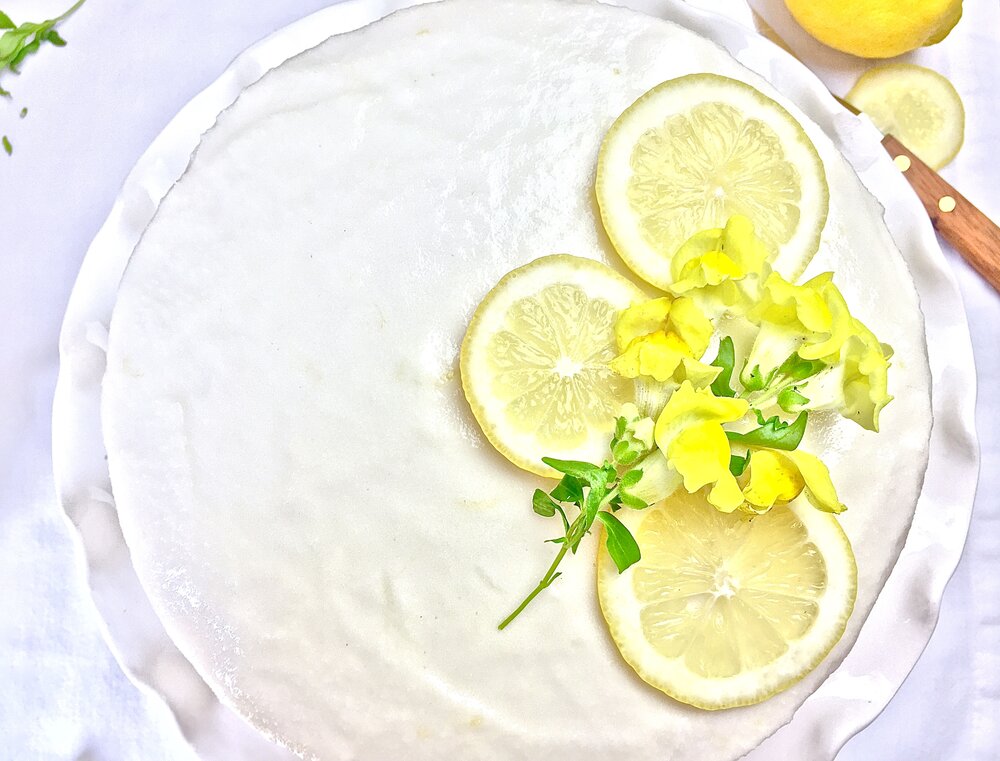
“ROYALLY DELICIOUS LEMON ELDERFLOWER CAKE”
Author: Adapted from The Violet Bakery Cookbook
Serves: 6-8 servings
Feel free to adapt this recipe to suit your tastes and strengths in the kitchen! The cooled, cordial-brushed cakes can be made a day or two in advance, simply wrap well in plastic and store in the fridge until ready to assemble. The buttercream frosting can also be made a day in advance, simply stir or use a mixer to smooth out consistency. NOTE: Belvoir Elderflower Pressé can be found at most high end grocery stores like Fresh Market and Whole Foods.
Ingredients
FOR THE CAKE:
8 Tablespoons unsalted butter (1 stick) at room temperature, plus more to grease cake pans
1 cup granulated sugar
1 Tablespoons finely grated lemon zest (from 1 lemon, reserve juice for use in frosting)
3 large eggs at room temperature
1 teaspoon vanilla extract
1/2 teaspoon Kosher salt
2 cups flour
2 teaspoons baking powder
1 teaspoon St. Germain or other elderflower liqueur
2/3 cup whole milk
1/2 cup elderflower cordial (i.e. Belvoir Elderflower Presse)
FOR THE FILLING:
1 cup chilled heavy whipping cream
1/2 cup store bought lemon curd at room temperature (can be found with the jams and jellies at your supermarket)
FOR THE FROSTING:
14 Tablespoons (1 3/4 sticks) unsalted butter at room temperature
4-6 cups confectioners sugar
7 Tablespoons whole milk
1/2 teaspoon grated lemon zest
2 Tablespoons fresh lemon juice
1 Tablespoon St. Germain elderflower liqueur
FOR ASSEMBLY:
Assortment of fresh or crystallized flowers
Lemon slices
Instructions
FOR THE CAKE: Preheat the oven to 300 degrees. Using 1-2 Tablespoons of unsalted butter, grease the three 8-9 inch cake pans and line the bottoms with parchment paper rounds. (If you only have 1-2 cake pans, cover batter and reserve at room temperature. Make sure the pans are cool before you reuse them. A simple rinse in cool water in the sink.) Place the granulated sugar in the bowl of a stand mixer or handheld electric mixer. Use your clean fingers to rub the lemon zest into the sugar until the sugar is aromatic and moist.
Add the butter and beat on med-high speed for about 3 minutes, until the mixture is fluffy and light. Meanwhile, in a liquid measuring cup lightly whisk the eggs together with the vanilla extract and Kosher salt. Reduce the mixer speed to low and gradually add to the butter-sugar mixture until fully incorporated. Stop to scrape down the bowl.
In a separate bowl, whisk together the flour and baking powder, then add half of it to the butter mixture. Beat on low speed until just combined, then add the milk and elderflower liqueur. Beat on low speed until well incorporated.
Add the remaining flour and beat on low speed until no trace of dry flour remains, stopping to scrape down bowl as needed. Divide batter equally between prepared cake pans and smooth tops with offset or silicone spatula. If you use a kitchen scale, each pan should contain 10.5 ounces (300 grams) of batter.
Bake pans on middle rack in oven for about 15-20 minutes or until the top of each cake layer springs back to the touch and the edges are lightly browned and pulling away from the sides of the pan. Cool cakes in pans for 15 minutes and then run a dull knife or offset spatula around the edges to release the layers. Invert onto a wire rack and peel off parchment paper from bottoms. Using a pastry or silicone brush, lightly brush the bottoms of the cake layers only with the elderflower cordial. Repeat 3-4 times allowing a few minutes in between applications for cakes to absorb the liquid. Stop applying the liqueur If the cakes start to break apart at all.
If you need to reuse the pans to get three layers, wash and dry the pan(s) and repeat baking and brushing with the cordial.
FOR THE FILLING: Pour the heavy cream into the bowl of a stand mixer fitted with balloon whisk attachment or use a handheld electric mixer. Beat on high speed until stiff peaks form. (To test, remove whisk attachment and invert, if the tip of cream flops over, you need to beat it longer. If if holds its shape, you're done.
Use a silicone spatula to gently fold in half of the lemon curd by lifting cream from bottom of bowl and folding it over the curd, rotating the bowl as you work. Be careful not to deflate the cream too much in the process. Fold in the remaining curd. Cover the bowl with plastic wrap and pop it into the fridge until ready to assemble the cake.
FOR THE FROSTING: Place the confectioners sugar in a large bowl and whisk to break up any lumps. Place the room temperature butter in the bowl of a stand mixer or electric handheld mixer and beat on low speed, gradually adding in 2 cups of the confectioners sugar. Increase speed to med-high until frosting is smooth and mixture is well combined, scraping down sides of bowl as needed. On med-low speed, add in the milk, beating until combined.
On med-low speed, gradually add 2 more cups of the confectioners sugar and beat at low speed for at least 3 minutes until mixture is smooth. Add the lemon zest, juice and St. Germain and beat at low speed until incorporated. Continue adding more confectioners sugar to achieve desired consistency which can vary based on temperature of kitchen and softness of butter. The frosting needs to be thin enough to spread but thick enough to not run off the cake. Chilling the frosting in the fridge for 20-30 minutes will help it set up.
TO ASSEMBLE THE CAKE: Place a dab of frosting in the center of a cardboard cake round, cake stand or plate, preferably with no rim. Place one cake layer in the center with the cordial-soaked side facing up.
Using an offset or silicone spatula, spread half of the filling evenly over the entire first layer, making sure to spread it out to the edges as well. Place the next cake layer on top and repeat with the remaining filling. Top with the third cake layer.
Place a small amount of frosting in a separate bowl for the crumb coat. This is the initial layer of frosting applied to the cake which helps to seal in the crumbs. Once the crumb coat is applied to the top and sides of the cake, place cake in fridge and allow it to set up for 20-30 minutes.
Apply the remaining frosting to the cake and decorate with flowers and sliced lemons or however you prefer. Return cake to the fridge and allow frosting to set up for an additional 20-30 minutes. Because of the soft filling and frosting, this cake is best cut and served while still very cool, right out of the fridge. By the time everyone eats the cake it will have softened up and temperature will be just right.
The marriage of Meghan Markle, former Hollywood actress and divorcée, and His Royal Highness Prince Henry of Wales (aka Prince Harry) has caused quite a stir both in England and abroad. And while Meghan may not be what the Royal family had in mind, there’s something about the way they’ve embraced this unexpected, yet utterly charming American that has inspired an intense enthusiasm for this union around the globe.
The gorgeous midday wedding took place in the centuries old St. George’s Chapel at Windsor Castle (yes, the Miskews got up at 4:30am to watch EVERY moment!). And while the ceremony followed a mostly traditional protocol, there were distinct nuances throughout that were unmistakably Meghan. From Bishop Michael Curry’s lengthy message of love to the sheer number of Hollywood icons in attendance (hello – Oprah AND the Clooneys?!?) it was clear a new era had begun. But from a culinary perspective, the most notable difference was the wedding cake.


Since the Middle Ages, fruitcake has been the traditional cake choice at royal weddings. Period. End of Story.
This was largely due to the cake’s staying power, the result of a hearty mixture of dried fruit, exotic spices and the addition of rum or brandy which acted as a natural preservative. So from the 1923 wedding of Prince Albert and Lady Elizabeth Bowes-Lyon to the 2011 marriage of Prince William to Kate Middleton, fruitcake has been an enduring royal presence and tradition…until now!
For their wedding, Meghan and Prince Harry eschewed the traditional fruitcake (YESSS!) in favor of an elegant Lemon Elderflower Cake. American-born, pastry Chef and friend of the bride Claire Ptak of London’s Violet Bakery was tapped to create the Spring-inspired marital confection. And in true royal fashion, Ptak spared no expense, flying in Amalfi lemons and organic eggs from Suffolk especially for the occasion. She also incorporated elderflower cordial from the Queen’s Sandringham estate in Norfolk because, well, why the heck wouldn’t you?



But what the heck IS elderflower anyway and why is it so special?
Elderflower is a small, intoxicatingly fragrant white flower that blossoms throughout the U.K. and Northern Europe in the Spring and early Summer, making this royal cake very seasonally and regionally appropriate. In this recipe you’ll use a combination of (1) Elderflower Cordial and (2) St. Germain. Elderflower cordial is a non-alcoholic soft drink made from a refined sugar and water solution and the flowers of the European Elderberry plant. I used Belvoir Elderflower Pressé in this recipe (see photo above), a premixed form of Elderberry cordial that is pretty widely available.
St. Germain, on the other hand, is an artisanally produced, French elderflower liqueur. It is made from hand harvested elderflowers grown in the French Alps that only bloom during a brief 4-5 week period. The delicate flowers are then macerated and their delicious essence is extracted and distilled into the fragrant pale golden liquid. St. Germain is pretty widely available now, especially since it is so delicious when mixed with Champagne! There’s something about the way it enhances citrus flavors which is why the combination of lemon and elderflower is so AMAZING!
I was thrilled to discover a foodie application for St. Germain especially since I’m working on a special series of desserts which incorporate my favorite wines, spirits and liqueurs (stay tuned!) and I can’t think of a better place to start than with this scrumptious cake!



This recipe offers a very doable, make it at home version of this oh so glamorous cake – and you don’t even need Amalfi lemons and the Queen’s elderflower cordial to make it!
To make things easier, bake the cake layers and prepare the frosting the day before assembling. A few pieces of baking equipment that’ll make the process easier include: three cake pans, a kitchen or small postal scale, a standing mixer and/or handheld electric mixer, parchment paper, an offset spatula and a 12-14″ cake stand. If you like to bake, you will use these essential items for years to come – I promise! Also, to decorate the cake, I stuck with a yellow theme, using some simple lemon slices and yellow snapdragons from my garden. Just remember to avoid eating any flowers not grown for culinary purposes!
I hope you enjoy conjuring royal elegance in your very own kitchen with this Lemon Elderflower Cake and a glamorous Congratulations to the newly appointed Duke and Duchess of Sussex!!!
Bon appétit,
![]()
The post A Royally Delicious Lemon Elderflower Cake appeared first on The Glamorous Gourmet.
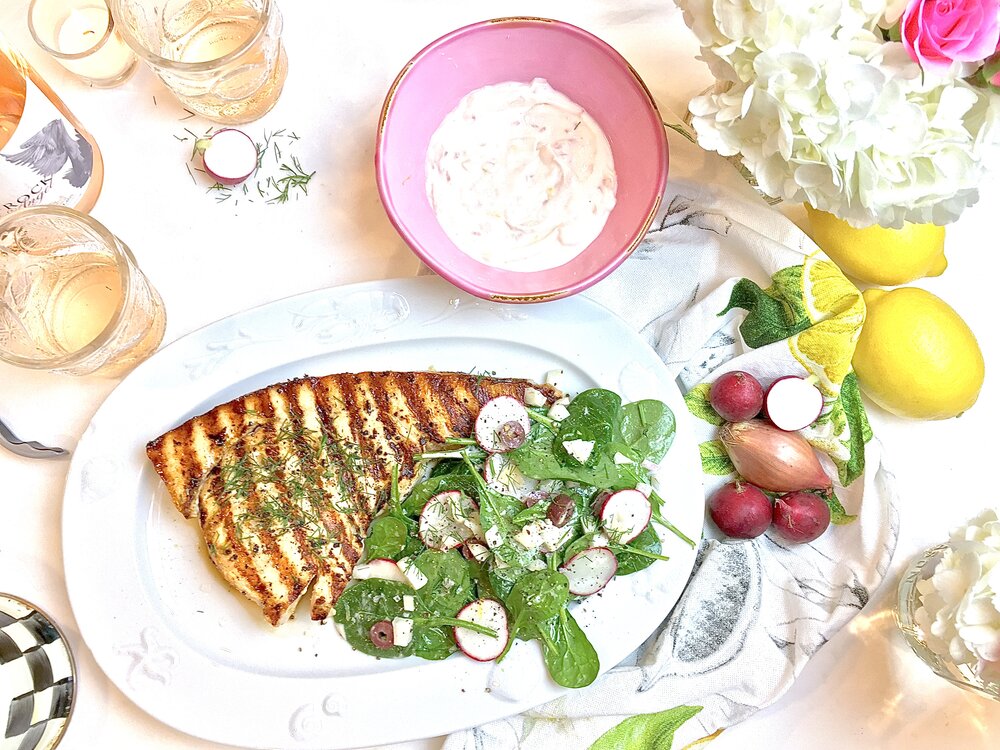
With the unseasonably warm weather we've been having here in South Florida, I really wanted to share a healthy, delicious Spring-inspired food and wine pairing with you. And when perusing this recipe for Grilled Swordfish with Rosé Aioli, Fennel, Olive + Spinach Salad from Chef Jennifer Carroll, Top Chef alum and protégé of the legendary Eric Ripert of Le Bernardin, she had me at rosé!
Nothing says Spring like rosé and we adore this incredibly refreshing, food-friendly wine here at Chez Miskew. Thankfully my husband is NOT afraid to "drink pink" (or wear pink for that matter!) and with our preternatural Summer-like weather we can drink it almost year round. Over the years we've even made a vinous mecca to Provence to visit some of our favorite rosé producers and also had the opportunity to sip rosé with Martha Stewart in South Beach.
“It's funny how what began as a humble, everyday wine from the South of France has evolved into a vinous juggernaut that’s now synonymous with glamour and celebrated with such hashtags as #roseallday, #drinkpink and #yeswayrose.”
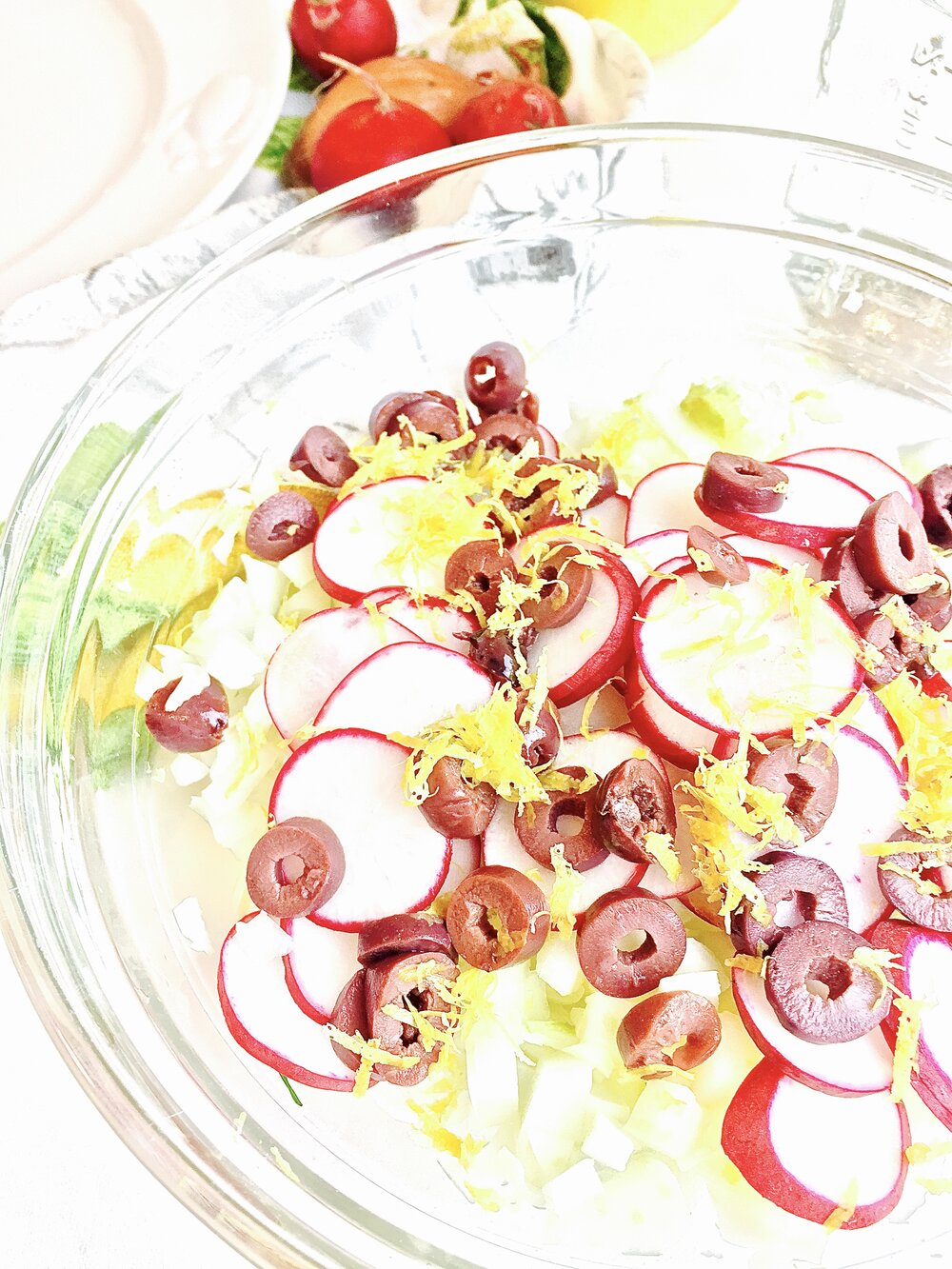
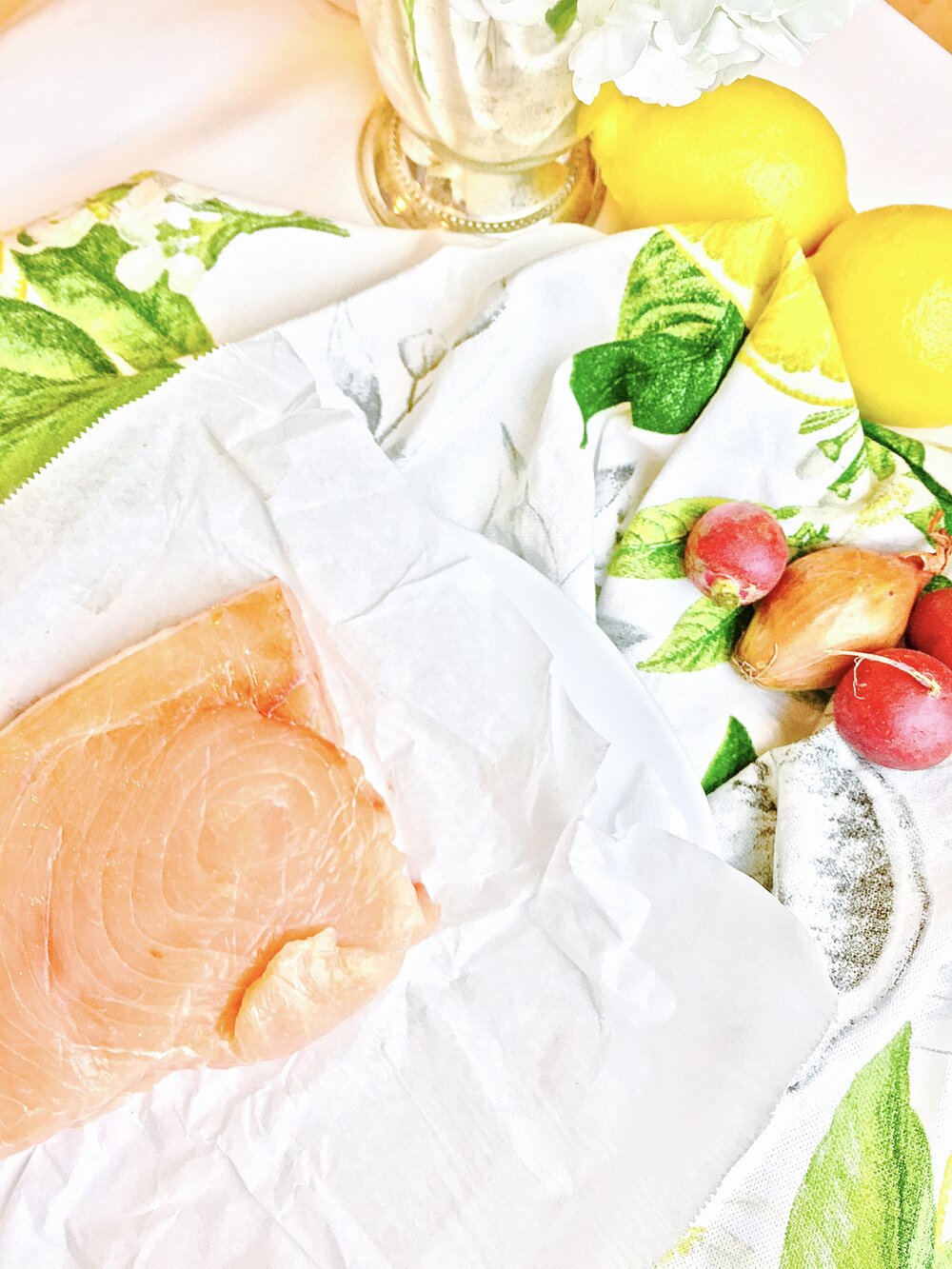
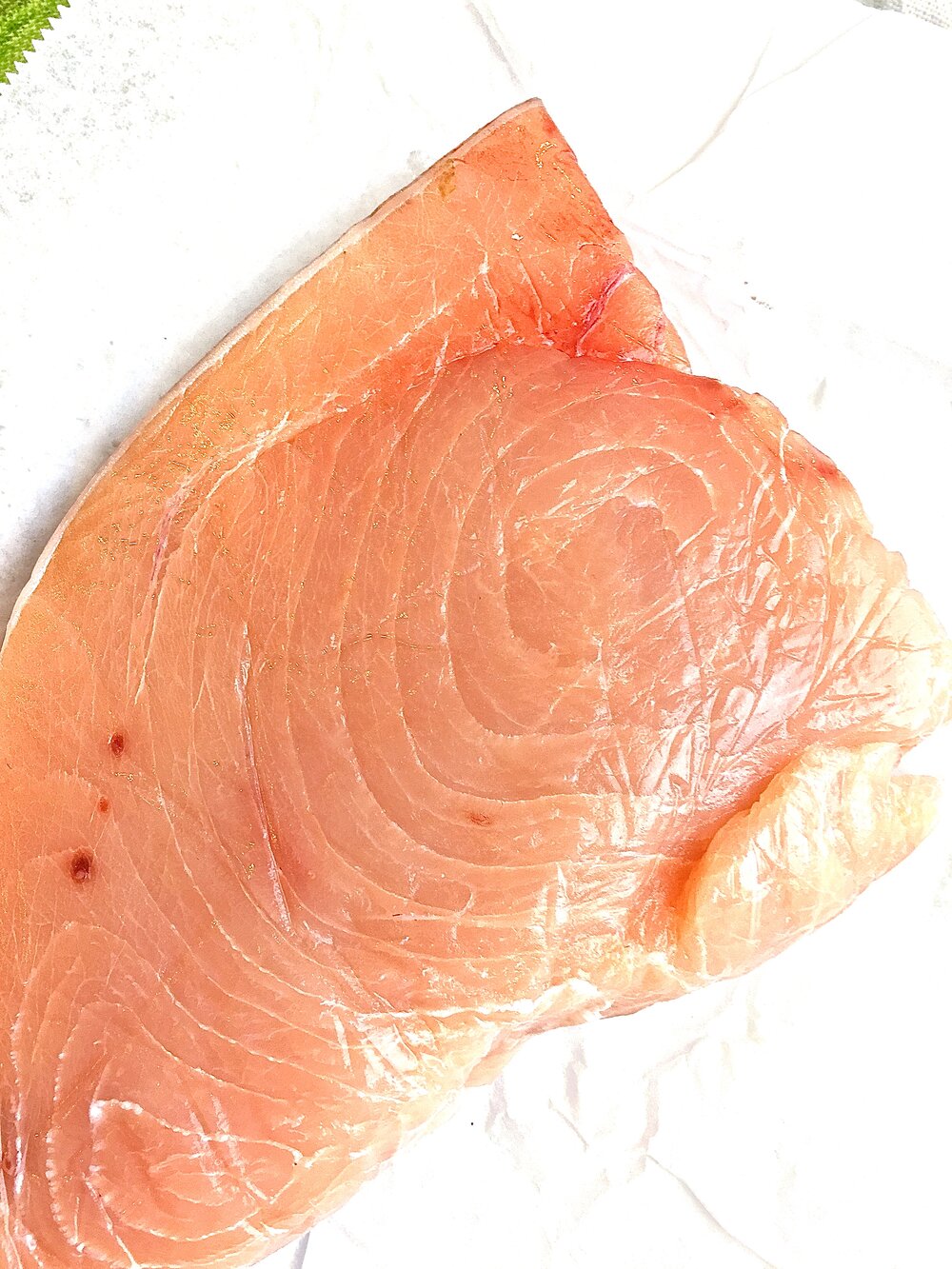
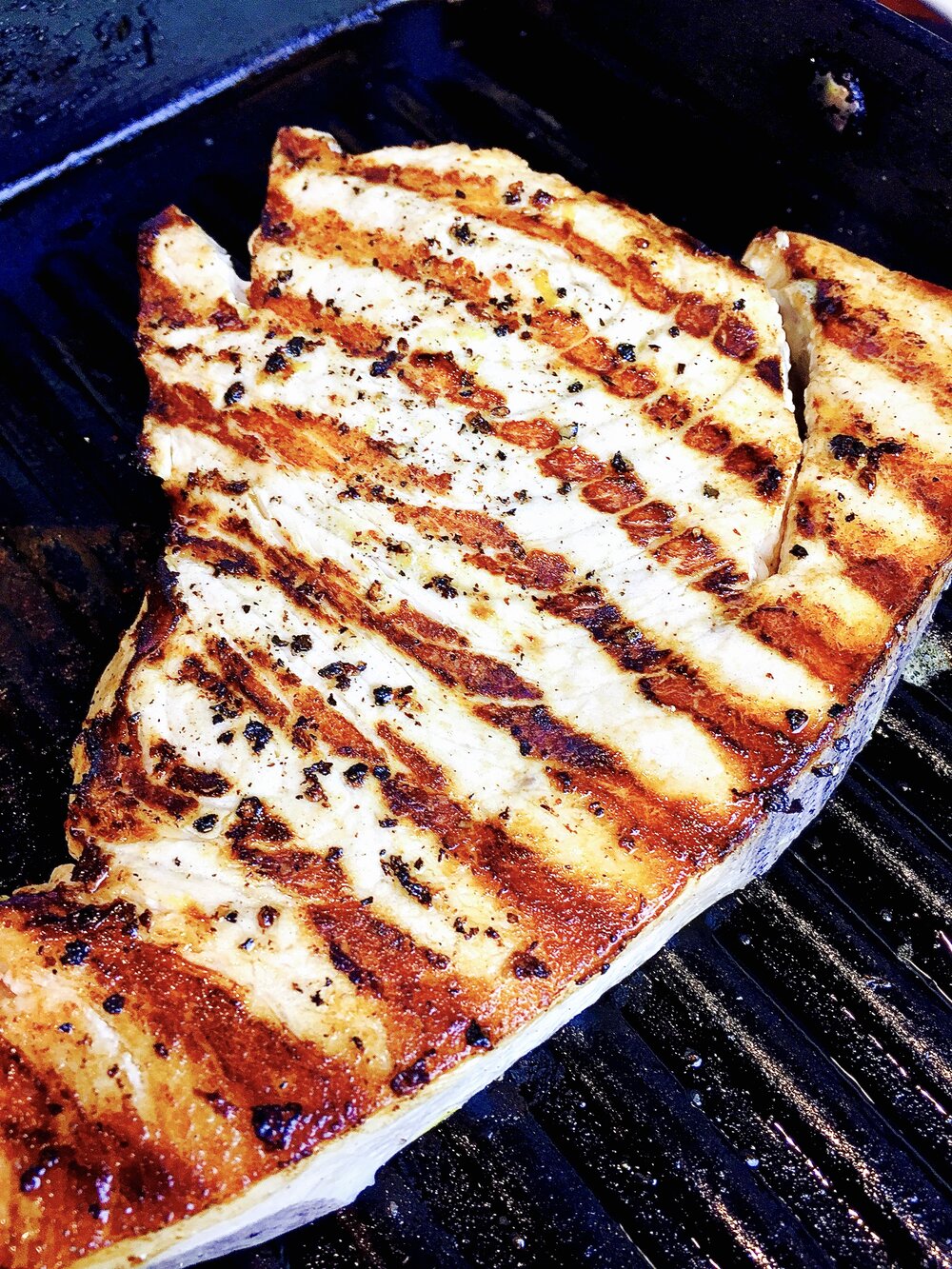
But back to our recipe which turns a little bit of kitchen time and some impeccably fresh ingredients into a completely delicious sensory experience. I was lucky to score some fresh-off-the-boat Pumpkin Swordfish from my local fishmonger (thanks, Captain Clay!). The "pumpkin" actually refers to the color of the fish (not the flavor!) which takes on an orange hue after the fish eats lots of Royal Red Shrimp found in very deep Atlantic waters. As far as flavor goes, pumpkin swordfish is slightly sweeter than white swordfish but either one will work perfectly in this recipe.
Simply put on some fabulous French music (see my recommendation below) and assemble the marinade for the swordfish which is simply extra virgin olive oil, lemon zest, juice and Kosher salt and pepper. Chill the fish in the fridge for an hour while you prepare the rosé aioli and fennel and olive relish.
The relish combines the delightful Mediterranean flavors of Kalamata olives, fennel and radishes brightened by a dash of lemon juice and rice wine vinegar (just FYI, rice vinegar is the SAME thing!). The intoxicating rosé aioli is what pulls everything together though. Made from reduced rosé wine whisked together with shallots, lemon juice, rice wine vinegar, grated garlic and mayonnaise it can conveniently be made a day or two in advance. It’s so delicious you could just spoon this right out of the bowl and into your mouth.
And I did. Many times.
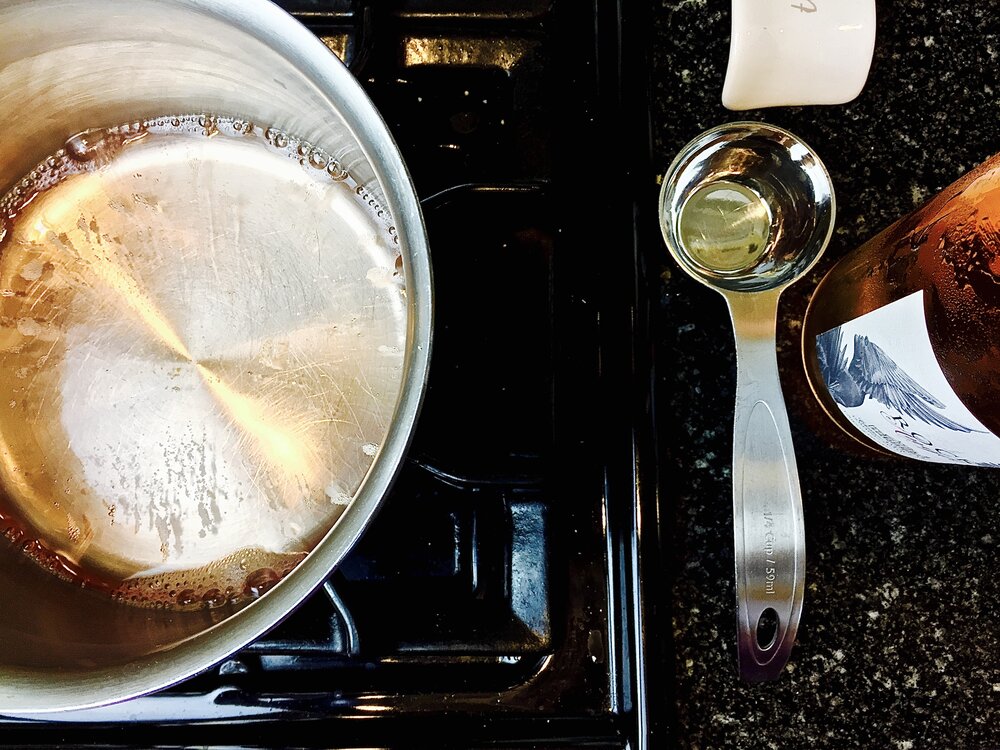
After an hour of marinating, simply cook the swordfish on a screaming hot grill pan (NO need to head outside) for about 3-4 minutes a side, garnish with a generous sprinkle of Maldon sea salt and chopped fennel fronds you're good to go. The texture of the fish combined with the delicious flavors of the salad are truly dreamy and perfect for Spring (or a few weeks before!).
RECOMMENDED WINE PAIRING: As the title of this post suggests, a Provençal rosé like the Chateau D'Esclans Whispering Angel Rosé ($24) or Rock Angel Rosé ($35) is the perfect pairing for this recipe. If you can't find either of these wines, any lighter colored dry (NOT sweet) rosé wine will do.
WHY THE PAIRING WORKS: There's something about the way rosé synergizes with the Mediterranean flavors of olives and fennel as well as the garlicky aioli that makes this pairing utterly amazing. The weight of the wine also matches the weight of the fish perfectly and complements its oily texture as well. For an "a-ha" moment, simply take a bite of the grilled swordfish dipped in the rosé aioli on your fork with a little bit of salad and then take a sip of wine!
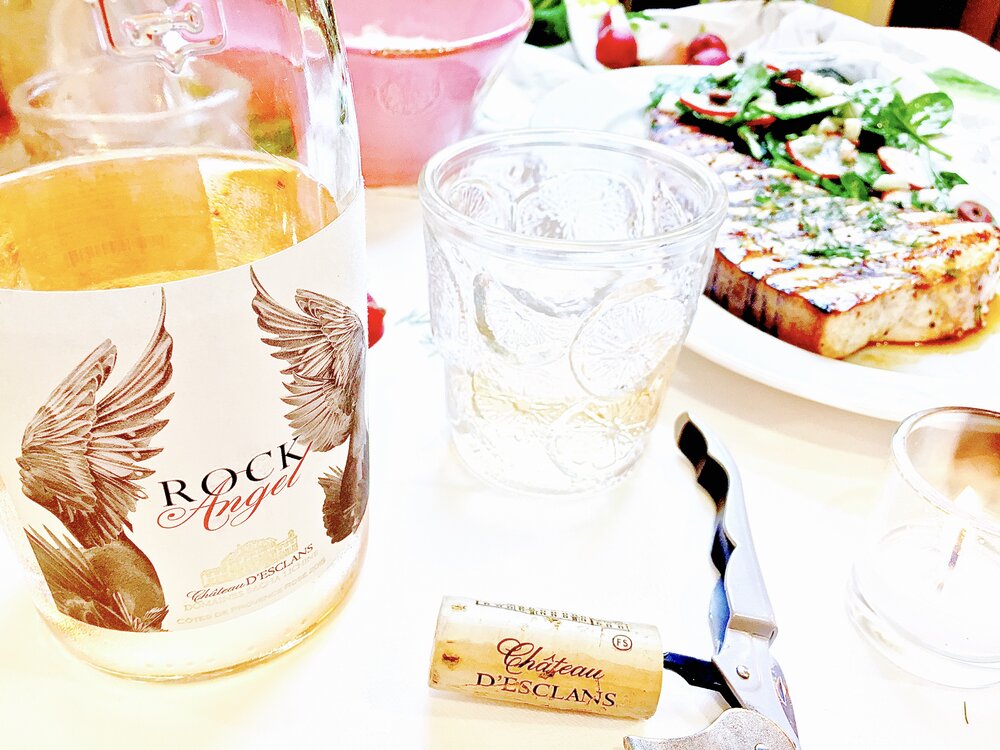
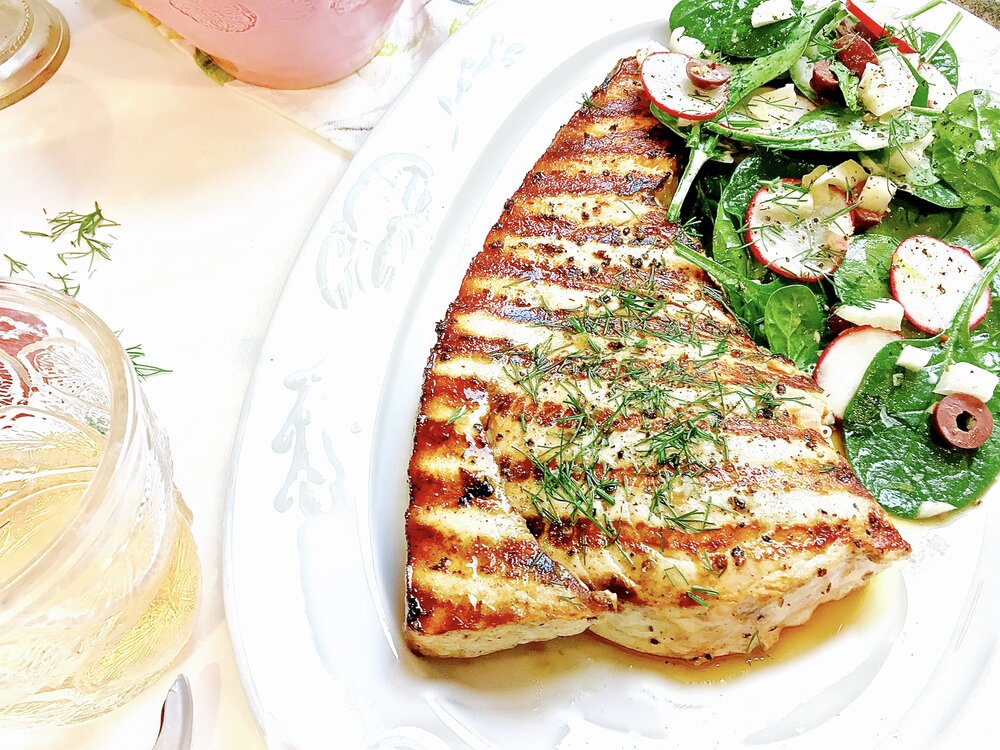
MUSIC TO LISTEN TO: The French-inspired "Something's Gotta Give" Soundtrack (that fabulous movie with Diane Keaton and Jack Nicholson?) pairs perfectly with this dish.
I hope you enjoy this recipe for Grilled Swordfish with Rosé Aioli, Fennel, Olive and Spinach Salad paired with a Provencal Rosé as much as we did. I'd love to hear what you think in the Comments section below.
Print Recipe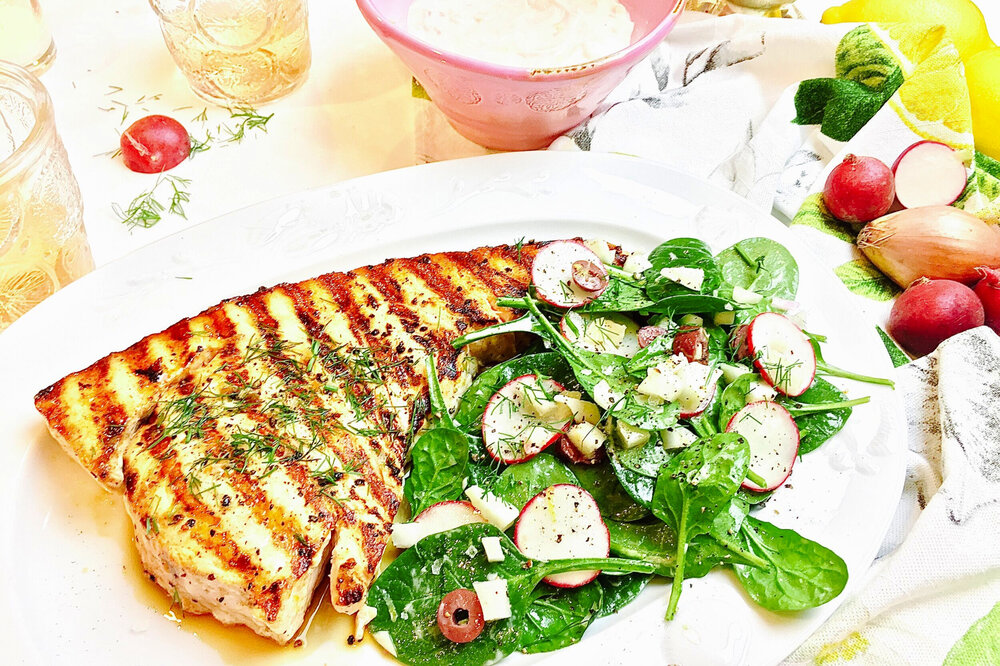
“GRILLED SWORDFISH WITH ROSE AIOLI + FENNEL, OLIVE + SPINACH SALAD PAIRED WITH A PROVENCAL ROSE”
Author: Adapted by Stephanie Miskew | The Glamorous Gourmet
Serves: 4 servings
Ingredients
SWORDFISH
4 1/2" thick 8 oz. swordfish steaks (bloodline trimmed/removed if you prefer)
1/4 cup extra-virgin olive oil, plus more for brushing
1 teaspoon finely grated lemon zest plus 1 Tablespoon fresh lemon juice
1/2 teaspoon Kosher salt
1/4 teaspoon freshly ground black pepper
ROSE AIOLI
3/4 cup dry rosé wine
2 Tablespoon minced shallots
1 Tablespoon unseasoned rice wine vinegar
1/2 teaspoon freshly grated lemon zest plus 2 teaspoons fresh lemon juice
1/4 teaspoon grated garlic
1 cup mayonnaise
RELISH
1 fennel bulb, cored & finely chopped, fronds reserved
1/4 cup pitted Kalamata olives, thinly sliced
1/2 cup thinly sliced radishes
5 oz. baby spinach (4 cups)
3 Tablespoons extra virgin olive oil
1 Tablespoon unseasoned rice wine vinegar
1/2 teaspoon finely grated lemon zest plus 1 Tablespoon fresh lemon juice
Maldon sea salt & freshly ground black pepper
Instructions
) In a large, resealable plastic bag, combine all of the ingredients except the swordfish & mix well. Add the swordfish & turn evenly to coat. Seal & refrigerate for 1 hour (do NOT let it marinate for much longer, otherwise the lemon juice will begin to cook the fish).
) In a small saucepan, simmer the rosé over moderate heat until reduced to 2 Tablespoons, approx. 10 minutes. Transfer to a medium bowl & let cool to room temperature. Then whisk in the shallot, vinegar, lemon zest, lemon juice, garlic & mayonnaise until smooth.
) Making the relish: In a medium bowl, combine all of the ingredients except the spinach & fennel fronds & season to taste with salt & pepper. When ready to eat, mix in the baby spinach leaves & 2 Tablespoons of the rosé aioli & toss to evenly coat.
) Heat a large cast-iron or non-stick grill pan & brush grates with oil. Remove swordfish from the marinade & season with Kosher salt & pepper. Grill over moderately high heat, turning once, until cooked through, 3-4 minutes per side.
) Plate the swordfish & garnish with a generous sprinkle of Maldon sea salt, freshly ground black pepper & fennel fronds. Serve with the relish & remaining rosé aioli paired with a crisp, refreshing dry rosé wine.
With the unseasonably warm weather we’ve been having here in South Florida, I really wanted to share a healthy, delicious Spring-inspired food and wine pairing with you. And when perusing this recipe for Grilled Swordfish with Rosé Aioli, Fennel, Olive + Spinach Salad from Chef Jennifer Carroll, Top Chef alum and protégé of the legendary Eric Ripert of Le Bernardin, she had me at rosé!
Nothing says Spring like rosé and we adore this incredibly refreshing, food-friendly wine here at Chez Miskew. Thankfully my husband is NOT afraid to “drink pink” (or wear pink for that matter!) and with our preternatural Summer-like weather we can drink it almost year round.

Over the years we’ve even made a vinous mecca to Provence to visit some of our favorite rosé producers and also had the opportunity to sip rosé with Martha Stewart in South Beach. It’s funny how what began as a humble, everyday wine from the South of France has evolved into a vinous juggernaut synonymous with glamour that’s lauded in such hashtags as #roseallday, #drinkpink and #yeswayrose.
But back to our recipe which turns a little bit of kitchen time and some impeccably fresh ingredients into a completely delicious sensory experience. I was lucky to score some fresh-off-the-boat Pumpkin Swordfish from my local fishmonger (thanks, Captain Clay!). The “pumpkin” actually refers to the color of the fish (not the flavor!) which takes on an orange hue after the fish eats lots of Royal Red Shrimp found in very deep Atlantic waters. As far as flavor goes, pumpkin swordfish is slightly sweeter than white swordfish but either one will work perfectly in this recipe.

Simply put on some fabulous French music (see my recommendation below) and assemble the marinade for the swordfish which is simply extra virgin olive oil, lemon zest, juice and Kosher salt and pepper. Chill the fish in the fridge for an hour while you prepare the rosé aioli and fennel and olive relish.
The relish combines the delightful Mediterranean flavors of Kalamata olives, fennel and radishes brightened by a dash of lemon juice and rice wine vinegar (just FYI, rice vinegar is the SAME thing!). The intoxicating rosé aioli is what pulls everything together though. Made from reduced rosé wine whisked together with shallots, lemon juice, rice wine vinegar, grated garlic and mayonnaise you could just spoon this right out of the bowl and into your mouth. And I did. Many times. The aioli can conveniently be made a day or two in advance.


After an hour of marinating, simply cook the swordfish on a screaming hot grill pan (NO need to head outside) for about 3-4 minutes a side, garnish with a generous sprinkle of Maldon sea salt and chopped fennel fronds you’re good to go. The texture of the fish combined with the delicious flavors of the salad are truly dreamy and perfect for Spring (or a few weeks before!).
RECOMMENDED WINE PAIRING: As the title of this post suggests, a Provençal rosé like the Chateau D’Esclans Whispering Angel Rosé ($24) or Rock Angel Rosé ($35) is the perfect pairing for this recipe. If you can’t find either of these wines, any lighter colored dry (NOT sweet) rosé wine will do.
WHY THE PAIRING WORKS: There’s something about the way rosé synergizes with the Mediterranean flavors of olives and fennel as well as the garlicky aioli that makes this pairing utterly amazing. The weight of the wine also matches the weight of the fish and complements its oily texture as well. For an “a-ha” moment, simply take a bite of the grilled swordfish dipped in the rosé aioli on your fork with a little bit of salad and then take a sip of wine!
MUSIC TO LISTEN TO: The French-inspired “Something’s Gotta Give” Soundtrack (remember the movie with Diane Keaton and Jack Nicholson?) pairs perfectly with this dish.
I hope you enjoy this recipe for Grilled Swordfish with Rosé Aioli, Fennel, Olive and Spinach Salad paired with a Provencal Rosé as much as we did. I’d love to hear what you think in the Comments section below.
Bon Appétit,
![]()
The post Perfect Pairings: Grilled Swordfish with Rosé Aioli, Fennel & Olive Salad + a Provençal Rosé appeared first on The Glamorous Gourmet.

I'm NO baker - but I do LOVE wine! So any recipe I discover that's even remotely related to wine...well, I feel a responsibility to explore it further. Especially when it looks outrageously delicious!
Such was the case with the Canelé, a delightful French pastry known for its mahogany, burnt sugar crust and contrasting decadent, custardy center. Typically flavored with rum and vanilla, these beauties are baked in a special Canelé mold to achieve their hallmark striated, cylindrical shape.
Are you wondering where the wine comes in yet?
The Canelé originated in Bordeaux, a region many wine lovers adore due to its legendary full-bodied, age worthy red wines. Well, critical to the production of these wines is a process called "fining" in which a compound, usually egg whites, is added to the wine which binds to any potentially harmful chemicals. To get geeky, the positively charged albumin in the egg whites binds to negatively charged, undesirable polyphenols in the wine which then congeal and settle to the bottom of the barrel where they can be easily removed.

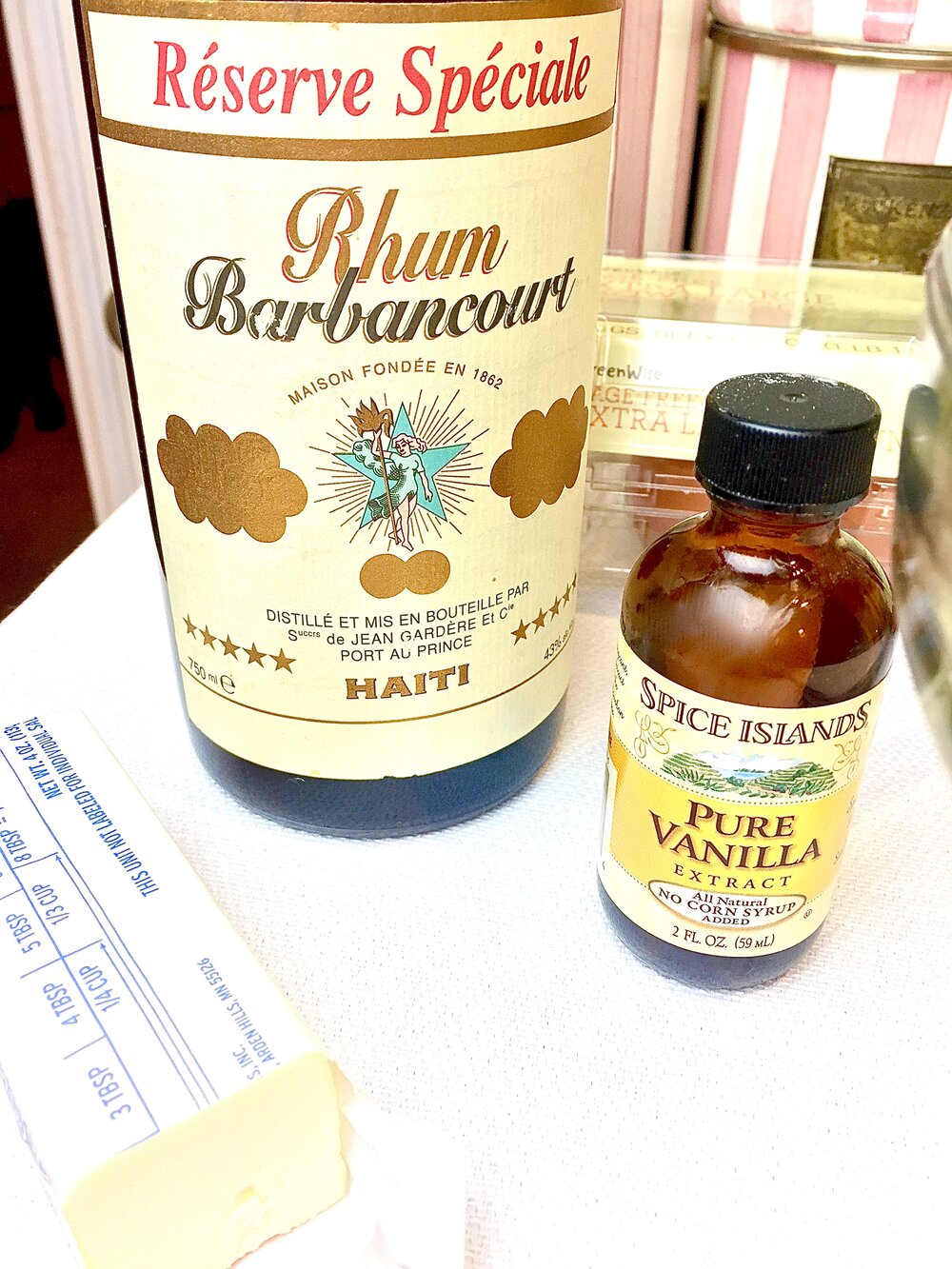
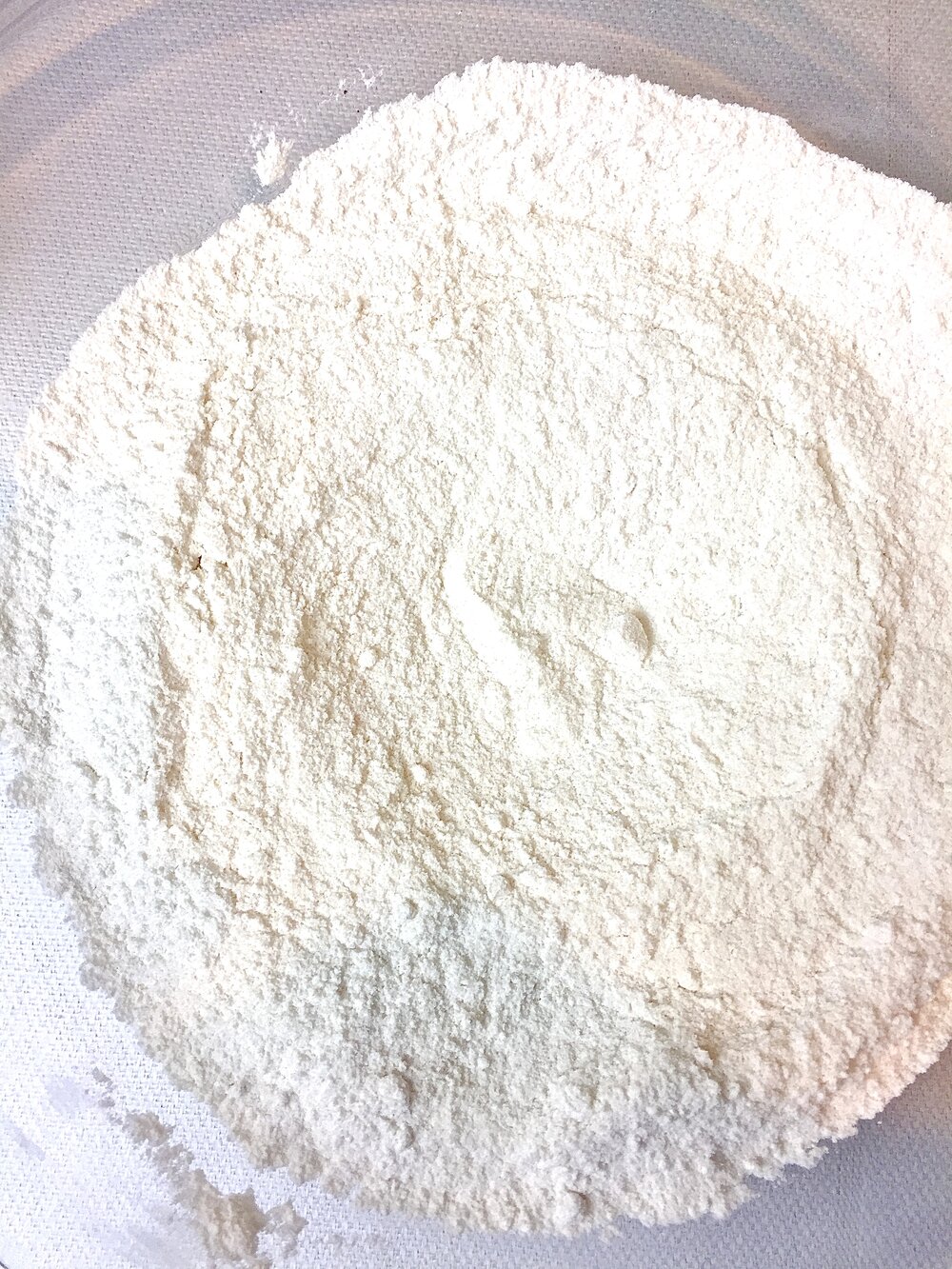
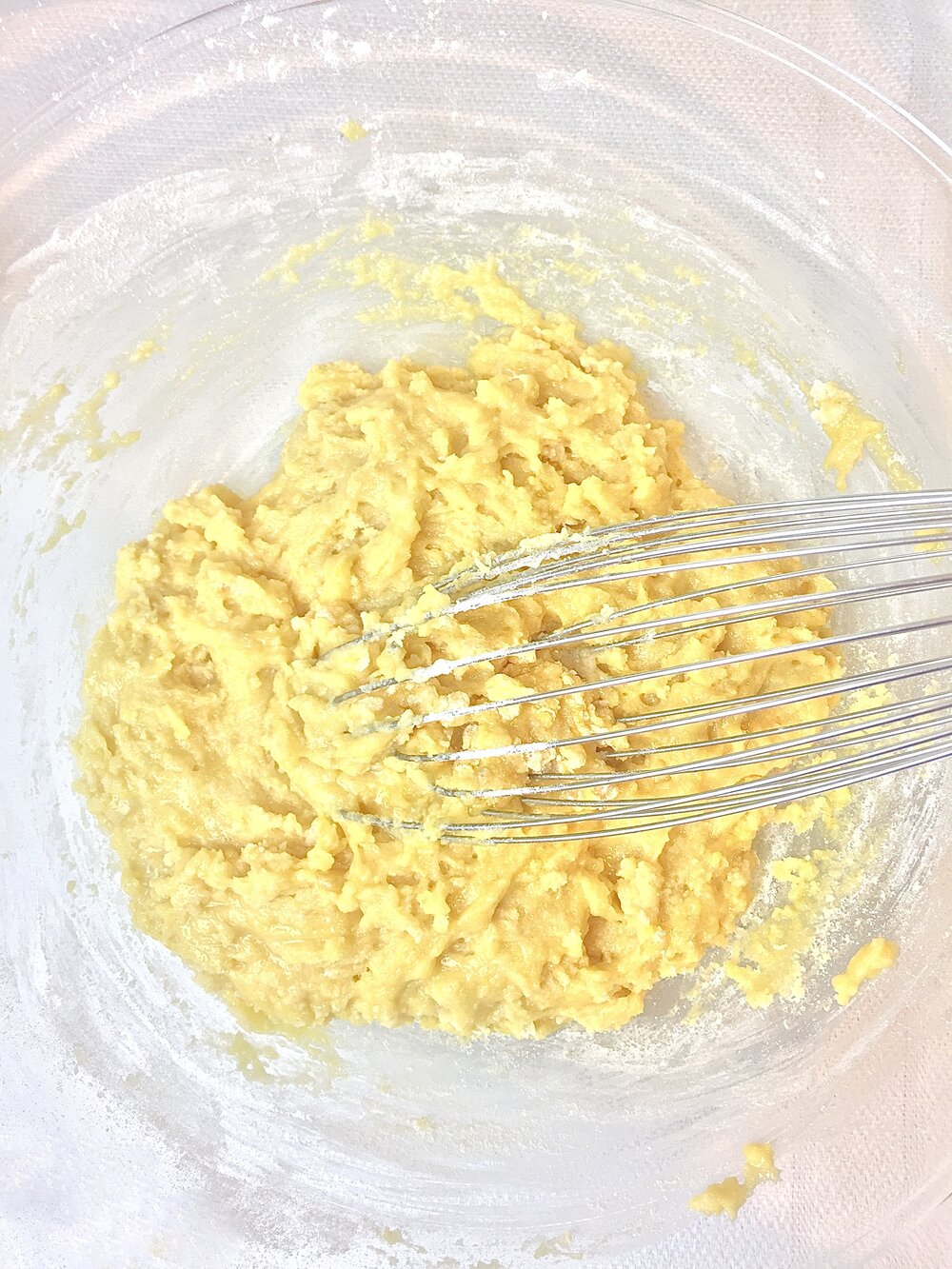
Since only the egg whites are used to "fine" the wine, the Canelé was born as a way to utilize all the leftover yolks. And personally, I can't think of a better place for them than the delightfully eggy, dense custard center of these glorious pastries!
On our first visit to Bordeaux we noticed Canelés everywhere, usually in miniature form. But this amazing recipe is for the standard size, which are bigger and allow for a better contrast between the caramelized outer crust and tender center.
Plus, there's just more Canelé to enjoy - what's not to love about that?
Now, if you're like me and not the most proficient baker, you might be a little intimidated by this recipe at first glance. I know I was, BUT I also love a challenge, especially one that leaves you with fabulous French pastries at the end. And, I'm here to tell you, Erin McDowell, food stylist and Food52 Baking Consultant, has written a brilliant recipe here. As a food blogger for almost 10 years now, I'm a stickler for a well-written recipe and this one is so well-written you actually feel like McDowell's in the kitchen with you, offering helpful advice at every step.
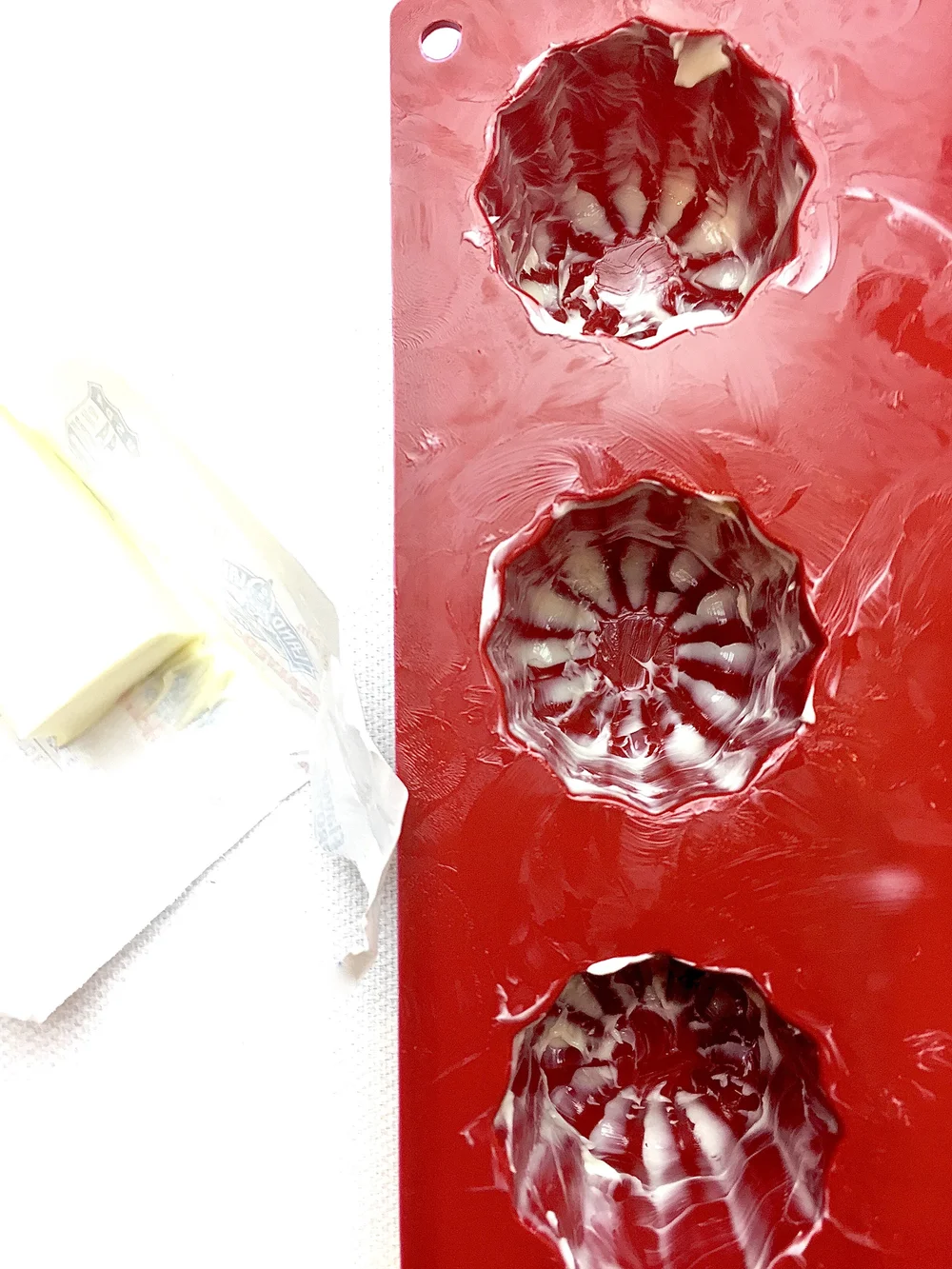
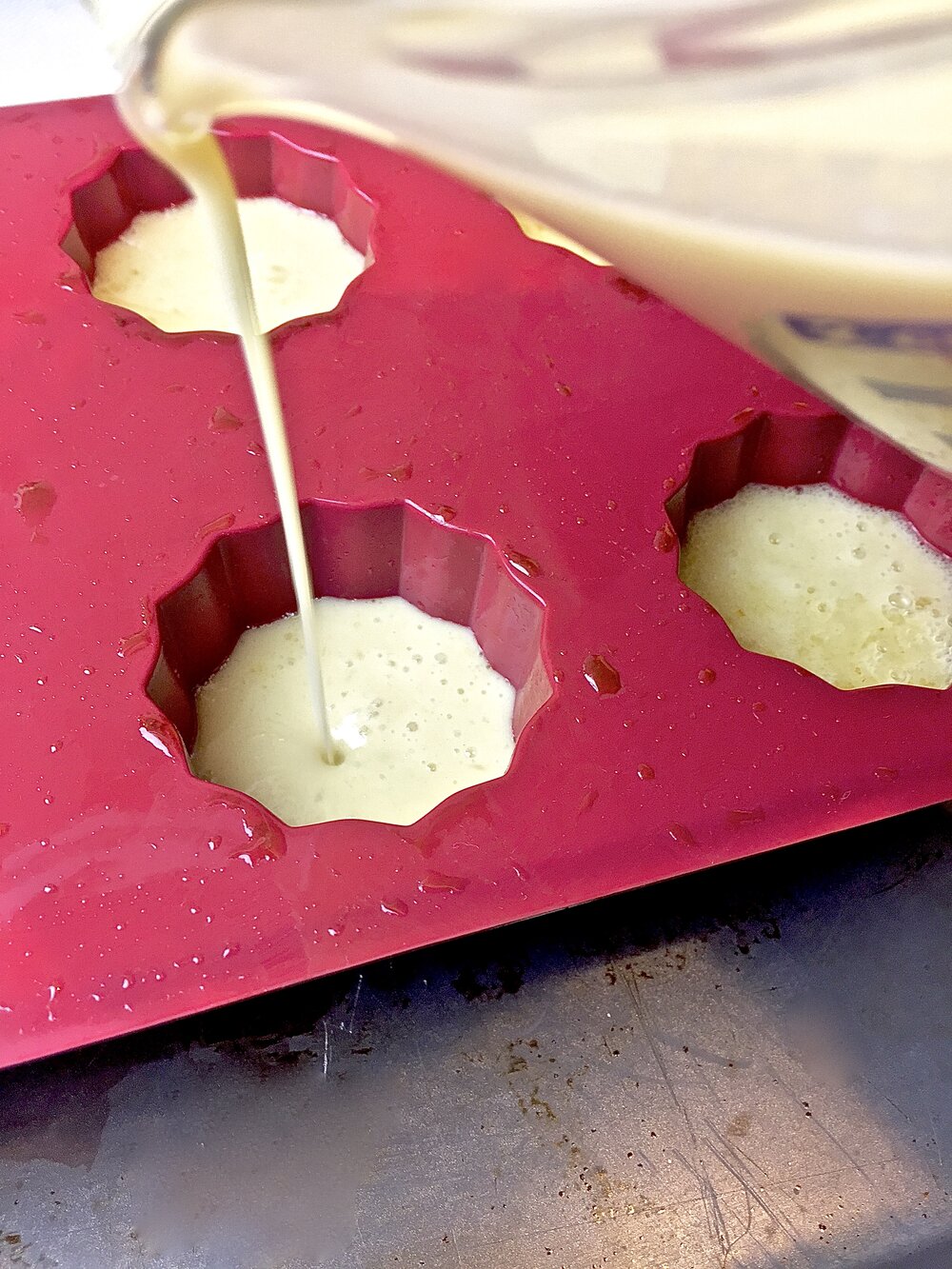
In addition to a few basic ingredients you probably already have in your pantry (i.e. eggs, flour, sugar, vanilla and butter) the only additional things you need to make this recipe are: (1) time and (2) a Canelé mold. This is the perfect weekend project since you need to let the batter rest overnight in the fridge before baking, which will also take a few hours. And, forget the elaborate and difficult to care for copper molds of the days of yore, McDowell recommends this brilliant silicone Canelé mold which can be found on Amazon for under ten dollars!
Now, the Canelés do require a little babysitting during the baking process. The mold needs to be generously buttered and pre-heated before adding the batter which aids in the caramelization process. The oven temperature also needs to be dropped after the first thirty minutes as well.
And, perhaps the ONLY thing McDowell doesn't prepare you for is the flipping of the Canelés in the mold for the final stage of baking. You might end up with some scorched fingertips but again, these beauties are so delicious you won't even notice those minor burns as you sink your teeth into these lovely confections!

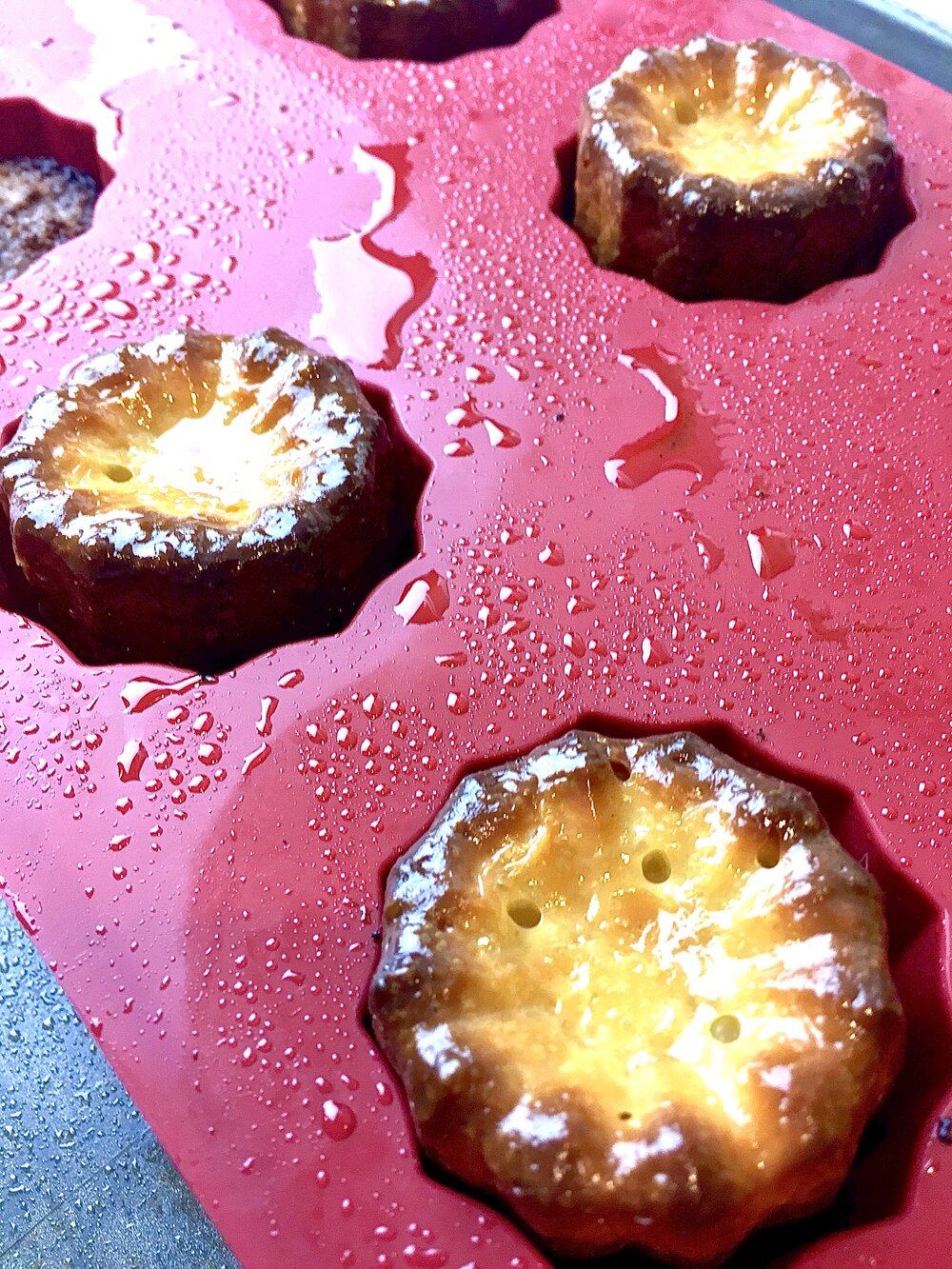
Also, if you'd like a little something to sip with your Canelés, a Sauternes would be a positively exquisite pairing. This dessert wine also hails from the Bordeaux region of France and I'm a fan of the tenet, "If it grows together, it goes together." This special wine owes its delightful honeyed citrus, floral, peach and ginger notes to a very special type of mold, botrytis cinerea, which imparts unique flavors and a delightful viscosity to the wine which would complement these pastries beautifully.
I especially like the Chateau Suduiraut Sauternes ($40/half-bottle), a delightful blend of 95% Semillon and 5% Sauvignon Blanc, the two main grapes used to make Sauternes. I also adore the Chateau Climens Barsac ($80/750mL bottle) a rare 100% Semillon wine from the Sauternes sub-region of Barsac helmed by the wonderful Bérénice Lurton. Both embody the hallmark tension between honeyed viscosity and fabulous acidity which makes these wines so incredibly special.
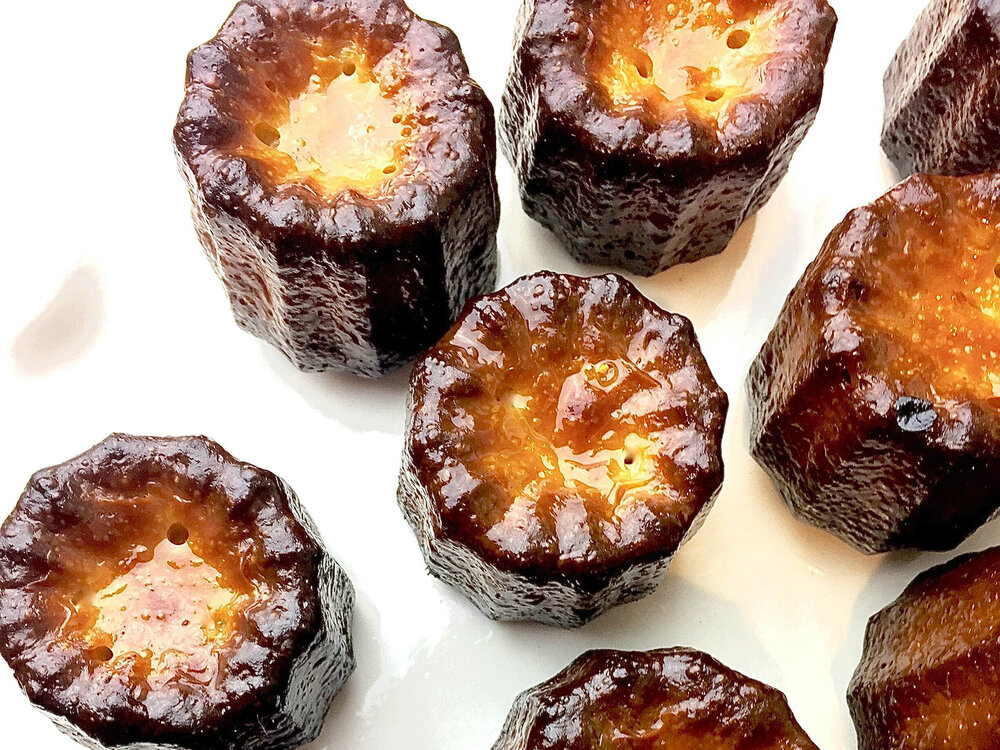

Rather than include McDowell'sCanelé recipe in this post, I'm linking to it on the Food52 website where I discovered it. I hope you enjoy it as much as we have and I'd also love to encourage any established or aspiring bakers out there to check out McDowell's brand new cookbook, The Fearless Baker ($17.50). Her website is also chock full of gorgeous food photos as well.
After experiencing such success with these Canelés, it has definitely inspired me to bake more. Plus, I can't wait to pair these sweet treats with even more amazing wines as well.
I’m NO baker – but I do LOVE wine! So any recipe I discover that’s even remotely related to wine…well, I feel a responsibility to explore it further. Especially when it looks outrageously delicious!
Such was the case with the Canelé, a delightful French pastry known for its mahogany, burnt sugar crust and contrasting decadent, custardy center. Typically flavored with rum and vanilla, these beauties are baked in a special Canelé mold to achieve their hallmark striated, cylindrical shape.
Are you wondering where the wine comes in yet?
The Canelé originated in Bordeaux, a region many wine lovers adore due to its legendary full-bodied, age worthy red wines. Well, critical to the production of these wines is a process called “fining” in which a compound, usually egg whites, is added to the wine which binds to any potentially harmful chemicals. To get geeky, the positively charged albumin in the egg whites binds to negatively charged, undesirable polyphenols in the wine which then congeal and settle to the bottom of the barrel where they can be easily removed.

Since only the egg whites are used to “fine” the wine, the Canelé was born as a way to utilize all the leftover yolks. And personally, I can’t think of a better place for them than the delightfully eggy, dense custard center of these glorious pastries!
On our first visit to Bordeaux we noticed Canelés everywhere, usually in miniature form. But this amazing recipe is for the standard size, which are bigger and allow for a better contrast between the caramelized outer crust and tender center. Plus, there’s just more Canelé to enjoy – what’s not to love about that?

Now, if you’re like me and not the most proficient baker, you might be a little intimidated by this recipe at first glance. I know I was, BUT I also love a challenge, especially one that leaves you with fabulous French pastries at the end. And, I’m here to tell you, Erin McDowell, food stylist and Food52 Baking Consultant, has written a brilliant recipe here. As a food blogger for almost 10 years now, I’m a stickler for a well-written recipe and this one is so well-written you actually feel like McDowell’s in the kitchen with you, offering helpful advice at every step.
In addition to a few basic ingredients you probably already have in your pantry (i.e. eggs, flour, sugar, vanilla and butter) the only additional things you need to make this recipe are: (1) time and (2) a Canelé mold. This is the perfect weekend project since you need to let the batter rest overnight in the fridge before baking, which will also take a few hours. And, forget the elaborate and difficult to care for copper molds of the days of yore, McDowell recommends this brilliant silicone Canelé mold which can be found on Amazon for under ten dollars!


Now, the Canelés do require a little babysitting during the baking process. The mold needs to be generously buttered and pre-heated before adding the batter which aids in the caramelization process. The oven temperature also needs to be dropped after the first thirty minutes as well.
And, perhaps the ONLY thing McDowell doesn’t prepare you for is the flipping of the Canelés in the mold for the final stage of baking. You might end up with some scorched fingertips but again, these beauties are so delicious you won’t even notice those minor burns as you sink your teeth into these lovely confections!



Also, if you’d like a little something to sip with your Canelés, a Sauternes would be an exquisite pairing. This dessert wine also hails from the Bordeaux region of France and I’m a fan of the tenet, “If it grows together, it goes together.” This special wine owes its delightful honeyed citrus, floral, peach and ginger notes to a very special type of mold, botrytis cinerea, which imparts unique flavors and a delightful viscosity to the wine which would complement these pastries beautifully.
I especially like the Chateau Suduiraut Sauternes ($40/half-bottle), a delightful blend of 95% Semillon and 5% Sauvignon Blanc, the two main grapes used to make Sauternes. I also adore the Chateau Climens Barsac ($80/750mL bottle) a rare 100% Semillon wine from the Sauternes sub-region of Barsac helmed by the wonderful Bérénice Lurton. Both embody the hallmark tension between honeyed viscosity and fabulous acidity which makes these wines so incredibly special.



Rather than include McDowell’s Canelé recipe in this post, I’m linking to it on the Food52 website where I discovered it. I hope you enjoy it as much as we have and I’d also love to encourage any established or aspiring bakers out there to check out McDowell’s brand new cookbook, The Fearless Baker ($17.50). Her website is also chock full of gorgeous food photos as well.
After experiencing such success with these Canelés, it has definitely inspired me to bake more. Plus, I can’t wait to pair these sweet treats with even more amazing wines as well.
Bon appétit,
![]()
The post Wine Country Baking: Canelés (Cannelés) de Bordeaux appeared first on The Glamorous Gourmet.